Don't wanna be here? Send us removal request.
Text
LEPTOSPIROSIS IN DOGS
Leptospirosis is a zoonotic disease caused by the infection of bacteria belonging to the genus Leptospira. It is most commonly transmitted through mucous membrane contact or wound exposure to urine of infected mammals, or contaminated food, bedding, soil, or water.



Leptospira like to live in warm, wet environments like damp soil/grass, mud, standing water, and lakes or ponds. Under ideal conditions, the bacteria can survive more than three months outside the body. Rodents and domesticated animals including raccoons, skunks, opossums, rats, cows, and pigs are but a few of the many known carriers. Because of the broad range of carrier species, any dog - even one that is briefly outdoors - may be vulnerable to the disease.




Each year, more than a million cases of leptospirosis are reported worldwide, with an estimated 59,000 deaths. Leptospirosis continues to be prevalent in dogs, although symptoms may vary depending on the strain of Leptospira bacteria and the dog’s immune system. While some infected dogs may show little to no signs of illness and recover on their own, others may develop severe, life-threatening illness. Most common signs include:
Lethargy
Loss of appetite
Vomiting/diarrhea
Abdominal pain
Jaundice (yellowing of the skin or mucous membranes)
Dehydration
Increased thirst and urination
Weight loss
Stiffness or muscle pain
The disease may progress into acute kidney and/or liver failure. Some dogs may even develop lung disease and rapid, difficulty breathing, damage to the heart muscles, or bleeding disorders that may exhibit through blood-tinged vomit, feces, or urine, nose bleeds, or petechia (red spots or bruising on the gums and other light-skinned areas). Fluid may also build up in the body, causing swollen limbs or excess fluid in the chest or abdomen.


Because leptospirosis may appear like many other illnesses, it is important to share information about your dog’s lifestyle and travel history that may highlight possible exposure to Leptospira bacteria. While there are various leptospirosis testing available, micro-agglutination tests (MAT) are the gold standard, and additional diagnostics including bloodwork, urinalysis, and ultrasound may also be recommended.


Leptospirosis is generally treated with antibiotics and supportive care. Patients are often hospitalized to receive fluid therapy, IV medications, nutritional support, and sometimes oxygen therapy and/or plasma transfusions in more severe cases.

Fortunately, there are vaccines available that protect against this life-threatening disease. Vaccinating dogs for leptospirosis may help protect their owners from infection, too. Aside from that, other precautions should be made to reduce risk of exposure:
Avoid letting your dog swim or drink from lakes, rivers, ponds, or any slow-moving or stagnant waters, puddles, or public/shared water bowls

Keep your dog away from farm animals and rodents, including carcasses, and minimize free-roaming in rural or peri-urban areas


Protect your dog’s paws with booties if they have any open wounds or sores

WARNING: If your dog is diagnosed with, or suspected to have leptospirosis, it is important to note that any animals that are not treated completely may shed Leptospira bacteria in their urine for up to three months. Promptly clean and disinfect any urine or contaminated areas within the home, and wear gloves while doing so. Also be mindful in guiding your dog to urinate far away from any areas other people or animals may have access to.


SOURCES/FURTHER READING
“Leptospirosis in Animals.” CDC, U.S. Centers for Disease Control and Prevention, 29 Apr. 2024, www.cdc.gov/leptospirosis/pets/index.html.
“Leptospirosis in Dogs.” AVMA Resources for Pet Owners, American Veterinary Medical Association, www.avma.org/resources-tools/pet-owners/petcare/leptospirosis.
Lunn, Katharine F. “Leptospirosis in Animals - Overview.” Merck Veterinary Manual, Merck & Co., Inc., Feb. 2022, www.merckvetmanual.com/generalized-conditions/leptospirosis/leptospirosis-in-animals-overview.
Sykes, Jane E., et al. “Updated ACVIM consensus statement on leptospirosis in dogs.” Journal of Veterinary Internal Medicine, vol. 37, no. 6, 20 Oct. 2023, pp. 1966–1982, https://doi.org/10.1111/jvim.16903.
Sykes, Jane E., and Krystle L. Reagan. “Leptospirosis in Dogs: Diagnosis, Treatment, and Management .” Today’s Veterinary Practice, no. Sept/Oct 2019, 9 Aug. 2019, https://todaysveterinarypractice.com/infectious-disease/diagnosis-and-treatment-of-leptospirosis-in-dogs/.
1 note
·
View note
Text
'TIS THE SEASON FOR THE SNEEZIN' - What causes dogs to sneeze and when should you be concerned?

sneeze /snēz/ (n.) the act of expelling air from the nose; (v.) to make a sudden involuntary expulsion of air from the nose/mouth due to irritation in the nostrils
Sneezing can be a perfectly normal behavior observed in our dogs, especially since they're constantly putting their noses to work. It's not uncommon for a dog to sniff up something once in awhile that might tickle their nose.
Dogs may also sneeze when they get happy or excited. Every now and then, a "reverse sneeze" can occur when air is inhaled rapidly. This can sound like a snort and sometimes look like an asthma attack, or like they are choking - although it can be scary, this is not at all what is happening and the reverse sneezing usually will subside after a few seconds. Here is an example below:
Common Causes of Sneezing

Allergies/Irritants - This includes plant particles, dust, or other substances in the air that can cause irritation in the nasal cavity.

Nasal Obstruction - Brachycephalic dog breeds (i.e. French Bulldog, Pug, Boxer, Pekingese, Shih Tzu, etc.) are more prone to frequent sneezing because of their flat faces and shortened muzzles, which cause compression to their nasal passages.
When to be concerned...
In some cases, sneezing - especially when severe or consistent - can be a sign of something more serious that needs to be addressed.
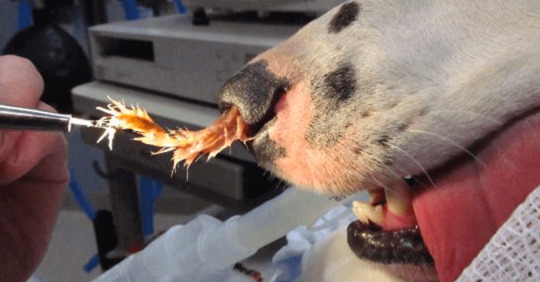
Foreign Objects - Some plant materials your dog may inhale can eventually get stuck. Foxtails especially pose a threat during the late spring-summer months, when their spiked leaves have dried out and hardened. Dogs often need to be sedated for foxtails to be extracted from the nasal cavity. (They also can get stuck under the skin, in between the paws, in ears, eyelids, or the throat. In worse-case scenarios, a foxtail can also travel to the lungs!)

Infectious Diseases - Other substances your dog may inhale could be bacterial or fungal spores. (See my previous posts about ASPERGILLOSIS and CANINE INFECTIOUS RESPIRATORY DISEASE COMPLEX.)
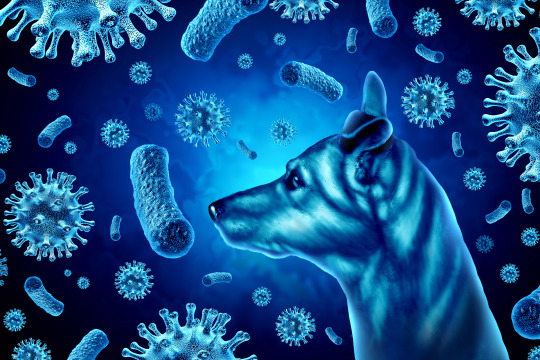
Nasal Mites - These parasites are reported worldwide. They can either be directly transmitted from other infested dogs, or otherwise found in the environment. An infestation of these in your dog's nose can cause constant itchiness, sneezing, and bleeding depending on the severity.

Dental Disease - Dogs who suffer from severe periodontal disease or a fractured tooth may develop tooth root abscesses. If left untreated, infection can spread to the surrounding tissues, sometimes causing significant facial swelling that erupt the nasal passages.
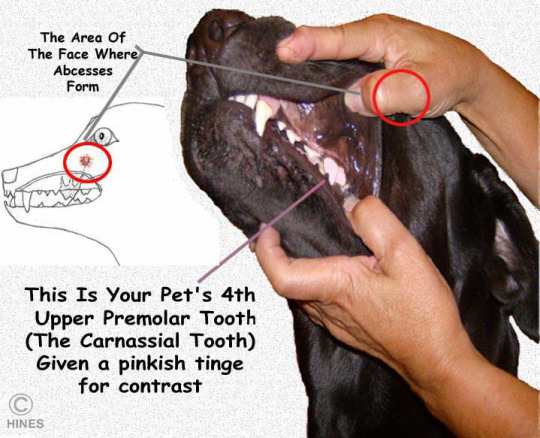
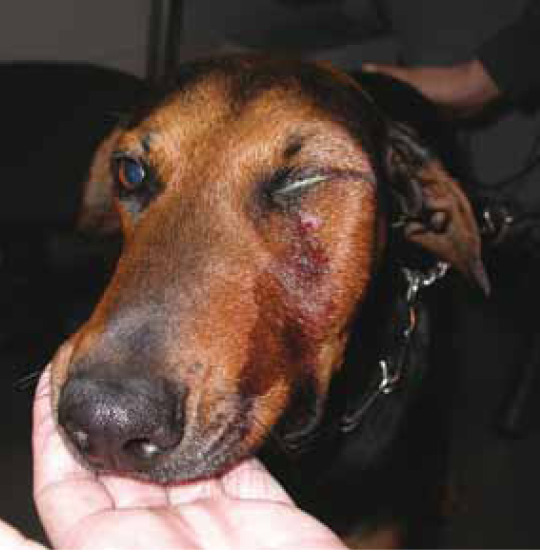

Nasal Tumor/Cancer - Statistically, about 1-2% of dog tumors are found in the nasal cavity - and about 80% of them turn out to be malignant. Because these tumors are hidden in the nasal cavity, they are more difficult to detect. By the time symptoms are noticeable by a dog owner, often the nasal cancer is already at an advanced stage - and due to the sensitivity of its location, surgery is often difficult. Prognosis varies by case, although the median survival rate for dogs that undergo radiation therapy ranges from 6-18 months. As with any type of cancer, the earlier it is diagnosed and treated, the better the chances are that treatment will be successful.
youtube
If you believe your dog's sneezing may be due to an underlying health issue, do not hesitate to consult with a veterinarian. Always be on the lookout for these additional symptoms if you ever think your dog is sneezing one too many times...
Frequent pawing at the nose
Frequent licking of the nose
Nasal discharge
Bleeding from the nostrils
Swelling or asymmetry in the face
Difficulty breathing

#canine health#veterinary medicine#sneezing#foxtails#dog tips#dog health#canine disease#nasal tumors#Youtube
0 notes
Text
ASPERGILLOSIS IN DOGS
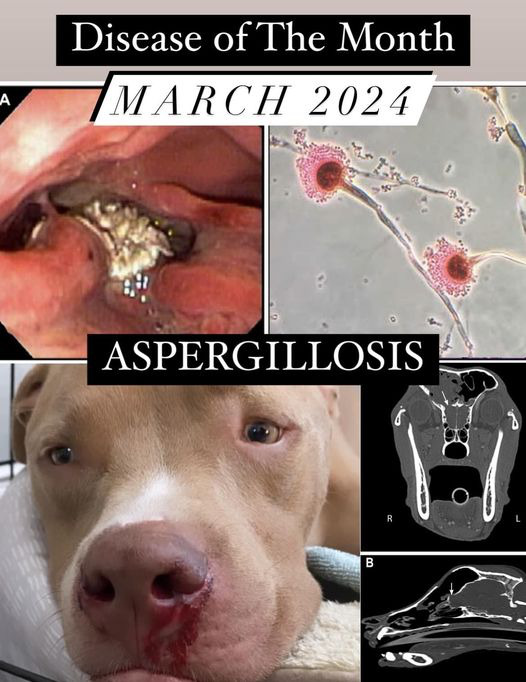
Aspergillosis is a fungal infection caused by a type of mold called Aspergillus. There are over 200 known species of Aspergillus fungi found worldwide that can grow either indoors or outdoors, and are commonly found in soil, dead or decaying vegetation, or spoiled food. They produce tiny asexual spores that can be easily inhaled or ingested, although do not generally lead to disease in humans or animals, unless the host has a compromised immune system or has significant exposure to the fungus.
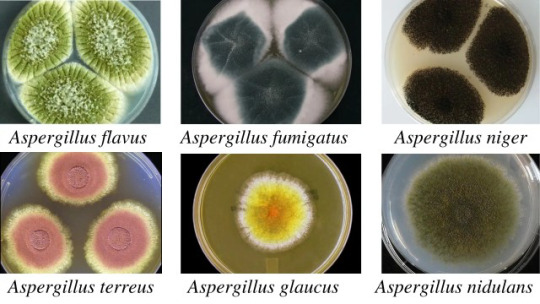
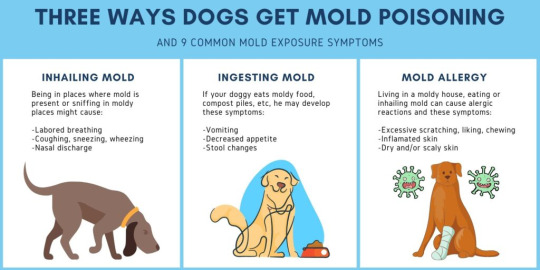
SINONASAL ASPERGILLOSIS
In dogs, especially dolicocephalic (long-snout) breeds such as the Greyhound, Collie, and Dachshund, aspergillosis is typically localized to the nasal cavity/sinuses. Symptoms of sinonasal aspergillosis include chronic sneezing and bloody nasal discharge, classically from one nostril, and sometimes depigmentation and/or ulceration of the nares.
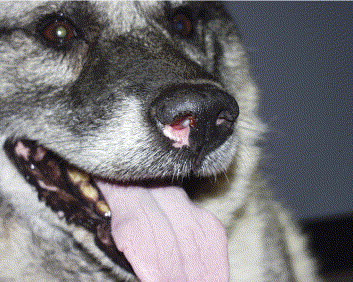
Mucous will eventually build up into a "fungal ball", or aspillergoma, which can be detected under advanced imaging.
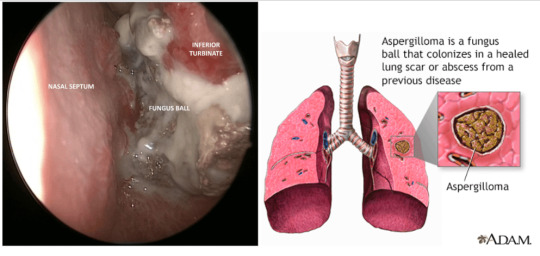
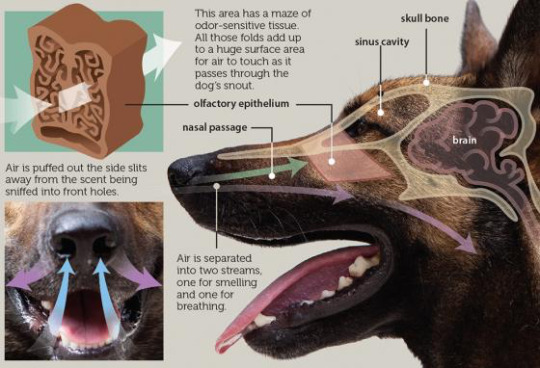
In severe cases, there will be marked damage of the nasal turbinates and the infection spreads from within the sinus cavity through the frontal bone of the skull, invading into the brain and central nervous system. For this reason, CT scan is highly recommended along with a rhinoscopy.
youtube
Historically, treating fungal infections with oral medications are very challenging, as the infections are often very slow to clear, and many anti-fungals available on the market are not only expensive, but may have severe side effects including liver damage and neurological symptoms. Because of this, the debridement of fungal lesions followed by topical infusion have become the gold standard treatment, as long as the cribriform plate of the skull is intact.
youtube
While under anesthesia, fungal plaque is removed with the guidance of a scope in the nasal cavity. In some cases, however, fungal plaque may be located in the sinuses but not in the nasal cavity - in which case trephination may be performed. An incision is made along the forehead to remove a layer of bone to create access.


Once the aspergilloma is debrided, a clotrimazole (anti-fungal) solution is infused into the nose and frontal sinuses while the the back of the patient's throat is closed off with gauze and foley catheters. (The patient is able to breathe through an endotracheal tube.) Cotton swabs are used to plug the nostrils, and the clovtrimazole solution incubates for 30 minutes to 1 hour, as the patient is periodically rotated to allow even distribution throughout the sinuses and maximize penetration.

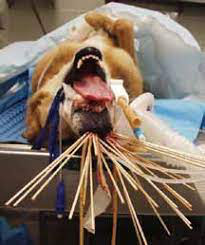

The clotrimazole solution is then drained out the nostrils and suctioned out. While this treatment has been shown to be highly effective, about 1/3 of patients may need repeat infusions.
If there is evidence that the infection has already eroded through the sinus bones and penetrated the brain, then the treatment described above may not be used, and oral medication would be recommended instead. Several months of treatment would be required, with a reported 60-70% success rate, compared to 86% observed in fungicide infusions.
DISSEMINATED ASPERGILLOSIS
Systemic aspergillosis occurs in dogs when the fungal spores diffuse past the respiratory system and enter the bloodstream, spreading to other sites within the body, including bone, spine, muscles, kidneys, as well as the eyes. A bronchopulmonary form of aspergillosis also forms in dogs, although rare.

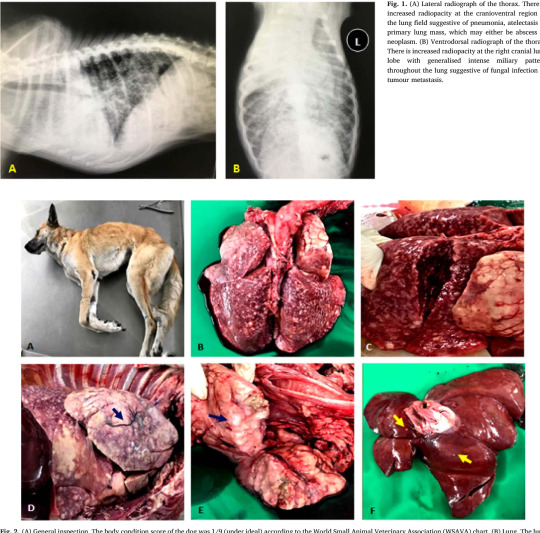
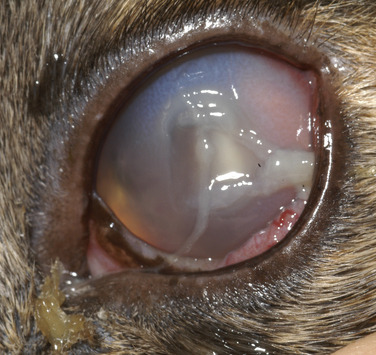
Although less commonly diagnosed, disseminated aspergillosis is most often observed in young-middle aged female German Shepherds and most commonly associated with the A. terreus species. Many patients may also have underlying immunocompromise, such as diabetes mellitus or concurrent bacterial infections, or are receiving immunosuppressive medications, such as glucocorticoids or chemotherapeutics.
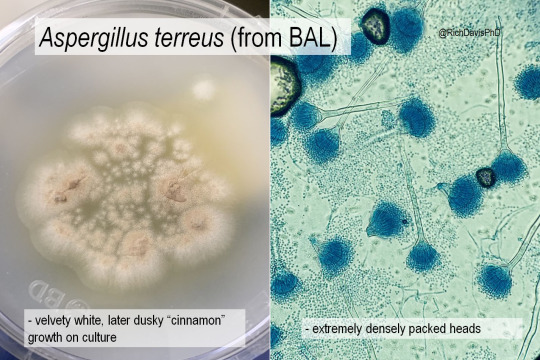
Clinical signs of disseminated aspergillosis are dependent on which organ(s) are involved, although many dogs may also show nonspecific signs such as anorexia, lethargy, and fever. Other symptoms of systemic involvement include weight loss, muscle wasting, hematuria, urinary incontinence, uveitis, and neurological deficits such as head tilt and ataxia. There are also often draining tracts (holes with pus or bloody discharge oozing out) in areas of infection.
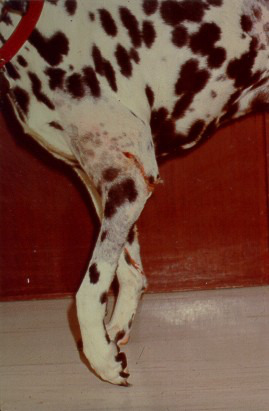
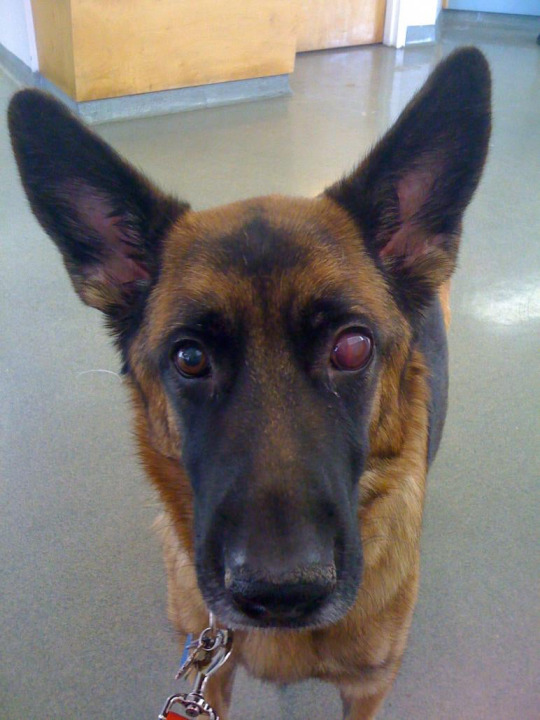
Diagnosing disseminated aspergillosis can actually be quite difficult and invasive. Unfortunately, many dogs are often terminal by the time aspergillosis is suspected, and have an extensive history of failed antimicrobial treatment before diagnosis.
Treatment is also particularly frustrating for these cases, either requiring years - or even lifelong - administration of anti-fungal drugs, and regular follow-ups to monitor for any side effects. While some anti-fungals like iconazole and fluconazole are more cost-effective than others, they are not as effective clinically. On the other hand, the ones that are more effective, like voriconazole, are also more expensive and more toxic over time.
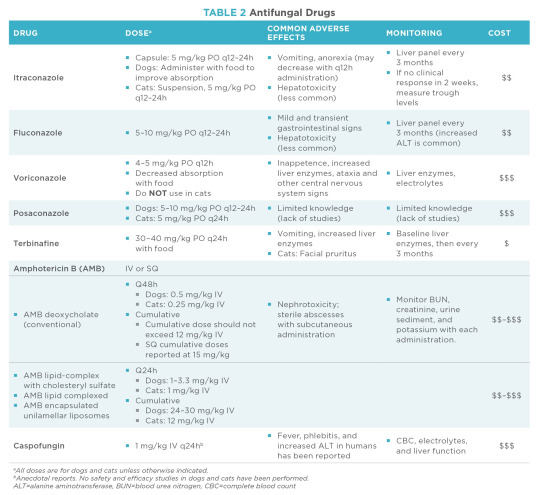
Often times, surgery may also be required to remove the source of the fungal infection (i.e. limb amputation, osteotomy, lung lobectomy, enucleation, etc.). Although surgery may sometimes be curative, prognosis is generally very guarded to poor, as many dogs will often die of their disease before medication can begin to control their condition, or if the surgery required is out of reach.
However, treatment should still be considered in dogs with less severe clinical signs. While treatment of an opportunistic fungal infection is very challenging, early recognition and aggressive treatment can enhance the chance for success.
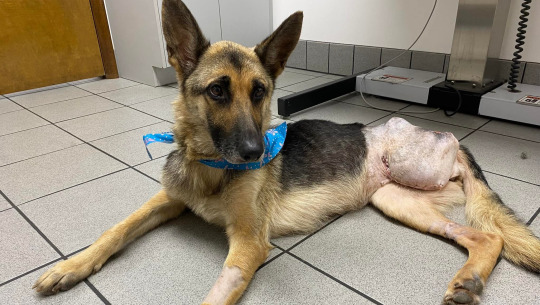
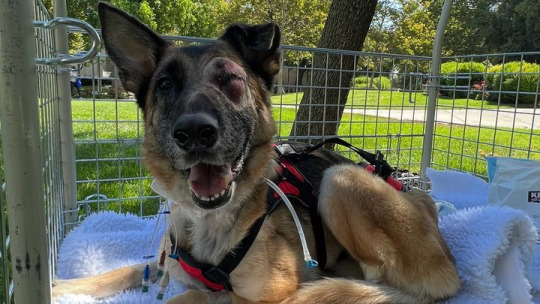
Sources/Further Reading:
Ballber, Clara, et al. “Minimally invasive treatment of sino‐nasal aspergillosis in dogs.” Journal of Veterinary Internal Medicine, vol. 32, no. 6, 16 Oct. 2018, pp. 2069–2073, https://doi.org/10.1111/jvim.15311.
Bennett, Peter F., et al. “Long term survival of a dog with disseminated Aspergillus deflectus infection without definitive treatment.” Medical Mycology Case Reports, vol. 22, Dec. 2018, pp. 1–3, https://doi.org/10.1016/j.mmcr.2018.07.002.
Brooks, Wendy. “Aspergillosis in Dogs.” Veterinary Partner, VIN (Veterinary Information Network), 1 Nov. 2023, veterinarypartner.vin.com/default.aspx?pid=19239&id=4952634.
Gull, Tamara. “Aspergillosis in Animals.” Merck Veterinary Manual, Merck & Co., Inc., Apr. 2023, www.merckvetmanual.com/generalized-conditions/fungal-infections/aspergillosis-in-animals.
Nelson, Whitney, and Audrey K. Cook. “When to Consider Aspergillosis in Dogs.” DVM 360, MJH Life Sciences, 1 Aug. 2010, www.dvm360.com/view/when-consider-aspergillosis-dogs.
Pascutti, Kristina, and Stuart A. Walton. “Approaches to Opportunistic Fungal Infections in Small Animals.” Today’s Veterinary Practice, 7 Apr. 2021, https://todaysveterinarypractice.com/internal-medicine/approaches-to-opportunistic-fungal-infections-in-small-animals/.
Renchler, J.S. “A Review of Systemic Aspergillosis in Dogs.” Clinical Reviews, Mira Vista Veterinary Diagnostics, Oct. 2020, miravistavets.com/fungal-diseases/aspergillus/review-systemic-aspergillosis-in-dogs/.
#aspergillosis#canine health#veterinary medicine#small animal internal medicine#fungal infection#sinonasal aspergillosis#disseminated aspergillosis#canine disease#dogs
1 note
·
View note
Text
THE COUGHING DOG & COVID-19:
How a global pandemic affected awareness of canine respiratory disease
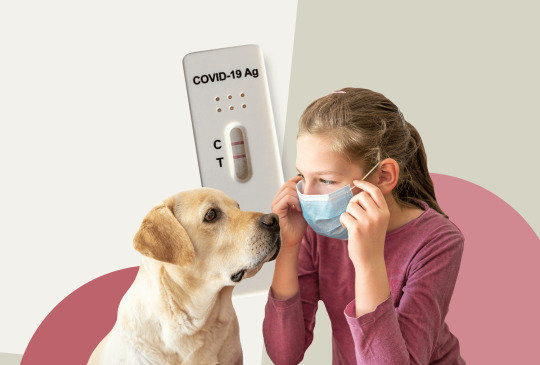
It's been about four years since the CDC confirmed the first case of COVID-19 in the U.S. on January 20, 2020. Less than two months after that, it was declared a global pandemic as the novel coronavirus SARS-CoV-2 had spread between 114 countries and lead to over 4,000 deaths.
Fortunately, vaccines became available in record time by the end of that same year, which then led to lower rates of hospitalization and fatalities. Yet, COVID-19 has not completely gone away and rather continues to mutate, with different variants now circulating in every country, affecting even those who are vaccinated.
Similarly, dogs who are up-to-date on all their vaccines may still sometimes develop "kennel cough". Although it is generally a self-limiting disease, there is a wide range of viruses and bacteria associated with Canine Infectious Respiratory Disease Complex (CIRDC), in which concurrent infection from multiple pathogens may be identified.
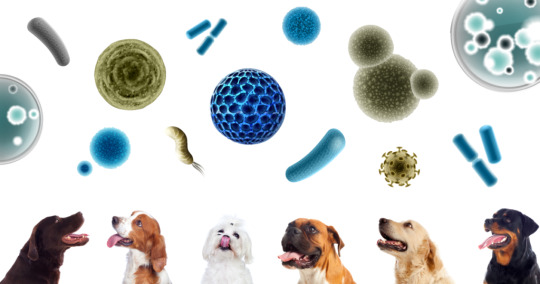
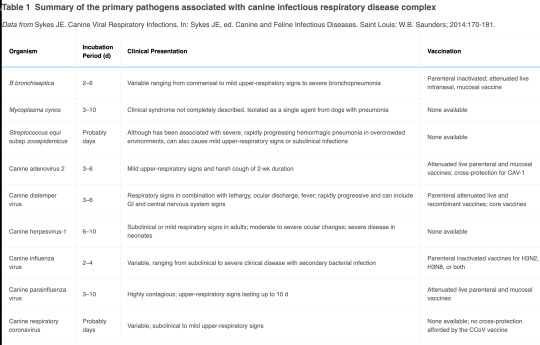

Symptoms of CIRDC may include:
Frequent, dry "honking" cough
Gagging or retching
Expectoration of mucus
Sneezing
Nasal and/or ocular discharge
Mild fever
Decreased energy and/or appetite
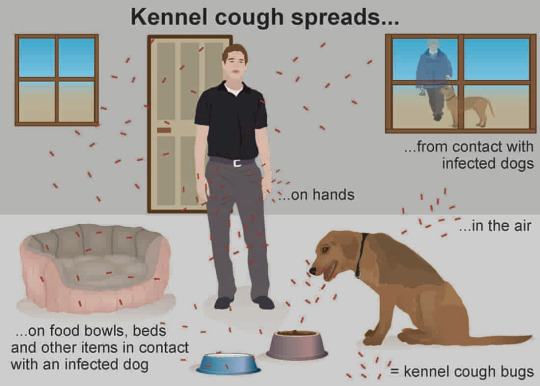
Disease may be transmitted through the inhalation of spores, or direct contact with infected dogs or contaminated surfaces. Dogs who are kept in close confinement, while under heightened stress, in poorly-ventilated areas with increased humidity (i.e. boarding/daycare facilities, grooming salons, shelters) are especially at risk for infection.
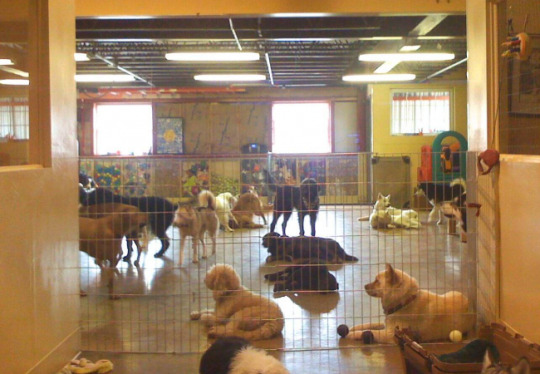
With an apparent rise in cases requiring hospitalization or more aggressive treatment, this type of severe kennel cough is now being referred to as atypical Canine Infectious Respiratory Disease (aCIRD), and is characterized by:
Mild-moderate inflammation of the trachea and bronchial airways for a prolonged duration (lasting 6 to 8 weeks or longer)
Chronic pneumonia or acute pneumonia that rapidly becomes severe leading to poor outcomes
Minimal or no response to antibiotic therapy
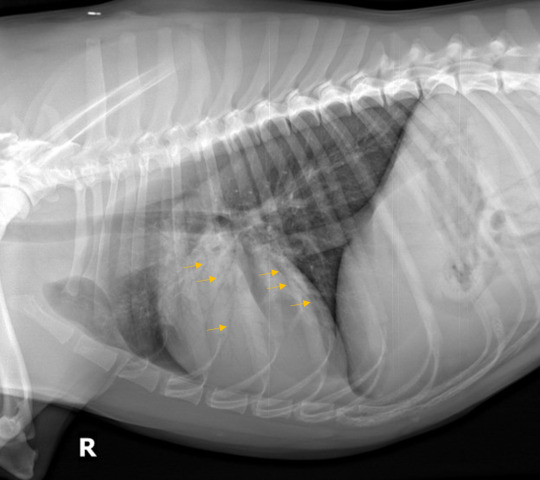

While aCIRD has been observed in multiple states within the U.S. in the last several months, the exact number of cases remains unknown as requirements for veterinarians to report aCIRD to their state animal health officials vary. Moreover, some veterinary clinics may actually have been treating cases like these perhaps over the last couple of years rather than just the past several months (mine included).
But, because there is no official health surveillance system available for pets the way there is for humans, it is hard to rule out whether or not these aCIRD cases are directly correlated to the same pathogen(s) - or even a new, unidentified one (or more).

Not to mention, without pet health insurance, many dog owners will often decline diagnostics due to cost - which removes the possibility for identifying infectious pathogens altogether. On the other hand, respiratory PCR tests that are performed may potentially be done too late, or use less diagnostic samples (i.e. nasal swab vs. transtracheal/bronchoalveolar wash). In other words, just because a dog comes back negative for all the pathogens listed on a canine respiratory PCR panel, does not necessarily mean they were NOT infected with by one of those bugs, nor indicate that a novel pathogen is involved.
According to Cornell University's Animal Health Diagnostic Center, PCR testing is recommended "during the acute phase of disease (ideally during the first week of clinical disease) and prior to initiating treatment. Delaying diagnostics may result in negative test results, as detection of some viruses may be inhibited by a rapid immune response, and antibiotic treatment may impede bacterial growth and detection."
Yet, despite the lack of data, COVID-19 has left many people more vigilant over respiratory illness - both in humans and their pets. This has led to more widespread media coverage of aCIRD being portrayed as a "mystery dog illness", further inciting the idea of an unknown novel pathogen.

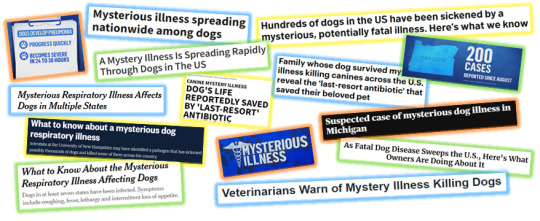
Many "pet experts" and social media influencers on TikTok and Instagram were quick to issue their own warnings of this mystery dog illness, while some even claimed their dog had the “rare” disease - possibly giving the appearance of a nationwide outbreak that didn't even exist.
Yet, what we don't know is...
how many aCIRD cases there truly have been
how many cases actually have gone through the appropriate (and timely) diagnostics to rule out any common and identifiable pathogens, and
whether or not all these reported aCIRD cases are even connected.
What we do know, however, is...
There has been an exponential rise in pet ownership since the pandemic. More pets = more pet illness reported. According to a 2019 ASPCA survey, about 1 out of every 5 American households acquired a new pet since the pandemic. "Looking back at the decade prior to the pandemic, there was a 4.7% growth in American pet ownership from 2009-2019. In comparison, that growth rate more than doubled to 9.77% growth in American pet ownership from 2020-2022."

Veterinary care has been disrupted in the last few years. Many businesses were forced to close or limit their hours, including non-emergency vet clinics. This caused many owners to have more difficulty with scheduling appointments with their primary vet, or rather some may have experienced financial constraints after being laid off. As a result, decreases in timely vaccination and wellness checks occurred, as well as a decline in owners’ willingness or capability to afford diagnostics/treatment for their sick pets. Additionally, many pet owners also previously expressed fear of getting COVID-19 from vet clinic staff themselves during the height of the pandemic. This may have influenced owners' decisions in bringing in their sick pets sooner than later, possibly allowing milder forms of kennel cough to develop into pneumonia.
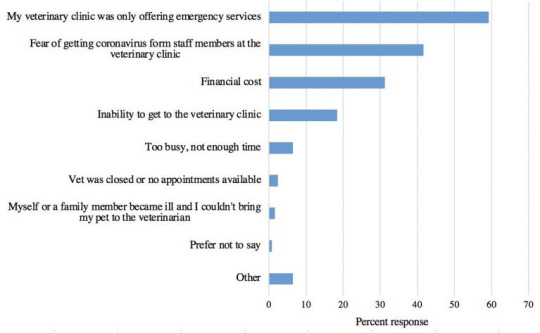
Many pet owners are also (ironically) hesitant to vaccinate their dogs. Common misperception and mistrust surrounding COVID-19 and other human vaccines have spilled over to pet vaccines. Out of 2,200 pet owners surveyed by Boston University School of Public Health, "nearly 40 percent of respondents believed that canine vaccines are unsafe, more than 20 percent believed these vaccines are ineffective, and 30 percent considered them to be medically unnecessary. About 37 percent of dog owners also believed that canine vaccination could cause their dogs to develop autism, even though there is no scientific data that validates this risk for animals or humans."

Changes in human activity since the pandemic have also changed the socialization of dogs. As quarantine restrictions, social distancing, and other pandemic precautions took place, more Americans limited their dogs' playtime with other dogs - both at parks and daycares. Even as "most companies are returning to the office, many workers will still benefit from increased time at home compared to the pre-pandemic norm - 'Workplace experts agree that most organizations will stick with the post-pandemic norm of spending two to three days per week in the office.'" With more people working from home, fewer dogs have required regular boarding at a daycare/kennel facility - which was a typical driving force for keeping dog vaccines up-to-date. This has led to larger populations of dogs with less immunity to respiratory infections.

Whether or not kennel cough/aCIRD may be due to one or more types of infection, some dogs may develop more severe symptoms that lead to pneumonia in as little as 24 hours - especially unvaccinated puppies and older adults with other underlying health issues. Dogs with pre-existing heart conditions, respiratory disease or anomalies like collapsing trachea, laryngeal paralysis, brachycephalic obstructive airway syndrome, as well as those who are obese, have limited ability to recover and thus higher chance of fatal outcomes from kennel cough.
This is why it is important to have your dog examined by a veterinarian at least once or twice a year. Dogs age faster than humans, and cannot verbally tell us when they feel unwell. They may instinctively hide their pain or not show any symptoms in the early stages of illness, preventing owners from realizing they are sick.
Wellness exams and screening tests allow veterinarians to detect diseases before they progress, and begin any treatments that will help your pet live healthier and longer.
How to Protect Against Respiratory Disease:
"Control the controllable." --- As of now, there are vaccines available in the U.S. which protect against the following respiratory infectious agents: - Canine adenovirus type 2 (CAV-2) - Canine distemper virus (CDV) - Canine parainfluenza virus (CPIV) - Canine influenza virus (CIV) subtypes H3N8 and H3N2 - Bordetella bronchiseptica


Talk to your vet about which vaccines are essential for your dog's health and lifestyle. Although there may still be possibilities for side effects from vaccines, they are often mild; dealing with a vaccine reaction may end up being a lot easier than dealing with your dog's chronic pneumonia.
Limit your dog's contact with other dogs. Try not to allow them to touch noses or play with dogs they do not know well, or have visible signs of respiratory illness (i.e. coughing, sneezing, nasal or even ocular discharge). Avoid dog parks and boarding kennels when there is a known outbreak in your area.

Invest in pet health insurance, or at least be prepared for unexpected medical expenses - aim to have at least $5000 in savings for emergencies. You may also consider looking into financial programs like CareCredit or ScratchPay, or inquire about any grants funded by your local animal shelter or hospital.

SOURCES/FURTHER READING:
Arbach, Lara. “Canine Infectious Respiratory Disease Complex.” Today’s Veterinary Nurse, 12 May 2021, https://todaysveterinarynurse.com/preventive-medicine/canine-infectious-respiratory-disease-complex/.
“Canine Infectious Respiratory Disease Complex (CIRDC).” Merck Animal Health, Nobivac, 28 Nov. 2023, www.merck-animal-health-usa.com/nobivac/canine-infectious-respiratory-disease-complex-cirdc.
“Canine Respiratory Disease Advisory.” Cornell University College of Veterinary Medicine, Animal Health Diagnostic Center, 1 Dec. 2023, www.vet.cornell.edu/animal-health-diagnostic-center/news/canine-respiratory-disease-advisory-0.
Desmon, Stephanie, and Meghan Davis. “What We Know - And Don’t Know - About Atypical Canine Respiratory Disease.” Public Health On Call, 5 Dec. 2023. John Hopkins Bloomberg School of Public Health. https://publichealth.jhu.edu/2023/understanding-atypical-canine-respiratory-disease
McKoy, Jillian. “Nearly Half of Dog Owners Are Hesitant to Vaccinate Their Pets.” The Brink, 7 Sept. 2023. https://www.bu.edu/articles/2023/nearly-half-of-dog-owners-are-hesitant-to-vaccinate-their-pets/
“Post-COVID Rise in Pet Ownership Evident & Persistent.” Strategic Insights for the Pet Industry: Pet Owners 2023 & Beyond, American Pet Products Association, 7 Dec. 2023, https://www.americanpetproducts.org/news/blogpost/2023/12/07/post-covid-rise-in-pet-ownership-evident-persistent.
Reagan, Krystle L., and Jane E. Sykes. “Canine Infectious Respiratory Disease.” Veterinary Clinics of North America: Small Animal Practice, vol. 50, no. 2, Mar. 2020, https://doi.org/10.1016/j.cvsm.2019.10.009. https://www.ncbi.nlm.nih.gov/pmc/articles/PMC7132485/
Smith, Sage M., et al. “Opportunities for Expanding Access to Veterinary Care: Lessons from Covid-19.” Frontiers in Veterinary Science, vol. 9, 11 Apr. 2022, https://doi.org/10.3389/fvets.2022.804794. https://www.ncbi.nlm.nih.gov/pmc/articles/PMC9036088/
*** BONUS FEATURE *** Last month, I won a free bottle of this respiratory/cardiovascular supplement from CBD Dog Health... studies for efficacy have yet to be performed, but their reviews and testimonials from other dog owners seem promising.
MycoDog "Breathe" Mushroom Tincture

"A proprietary water extract of Cordyceps, Reishi, Artist Conk and Chaga, with Ashwagandha preserved in organic, vegetable glycerin... hot water tripled extracted from the fruiting bodies of fungi cultivated and wild-harvested in North America." Artist Conk (Ganoderma applanatum) --- known for its antimicrobial properties; used in traditional Chinese medicine to treat esophageal cancer and reduce phlegm Reishi (Ganoderma lucidum) --- known for its antioxidant properties; used in traditional Chinese medicine as vasodilators and to improve circulation to the heart Chaga (Inonotus obliquus) --- known for its immune-modulating nutrients; used in traditional Chinese medicine to break down mucus and nourish the heart Cordyceps (Cordyceps militaris) --- known for its anti-inflammatory properties and promoting energy; used in traditional Chinese medicine to improve lung function and stop a cough Ashwagandha (Withania somnifera) --- known for its calming, adaptogenic properties; used in Indian Aryuvedic medicine to enhance stamina while recovering from illness
#CIRDC#mystery dog respiratory illness#canine health#covid 19#aCIRD#atypical canine infectious respiratory disease#one health
0 notes
Text
How to Enhance Your Dog's Joint Health
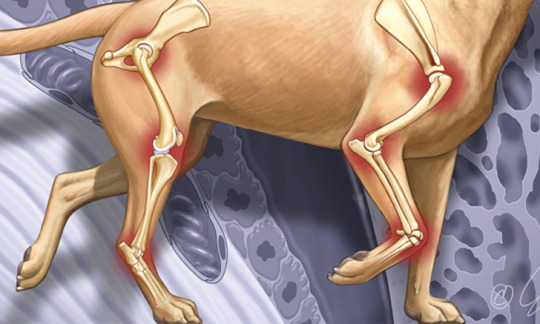
Arthritis refers to the inflammation of one or more joints. In a healthy joint capsule, cartilage protects bones where they meet by providing cushion, while synovial fluid acts as a lubricant to reduce friction when the bones glide against each other.
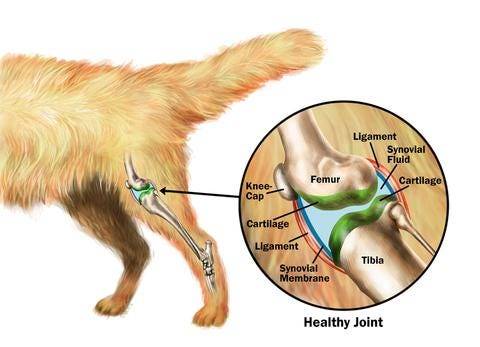
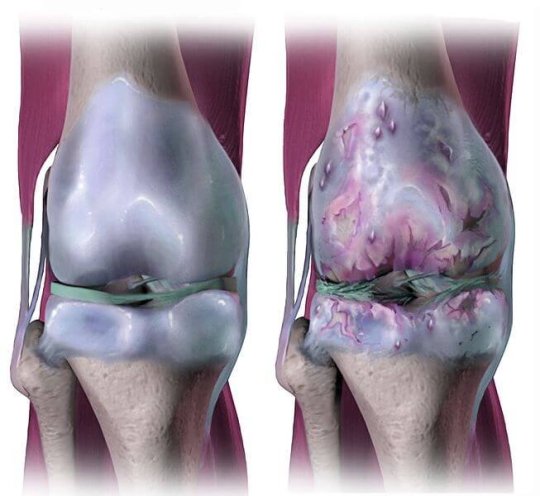
However, after strenuous activity and repeated motion of the joints, or any trauma to the area, the cartilage and synovial fluid tends to thin over time, allowing the bones to rub against each other and cause pain. Inflammation and swelling builds within the joint capsule, leading to stiffness and issues with mobility. As the inflammation persists, certain chemicals and enzymes may be released that begin to further eat away at the cartilage and sometimes the bone.
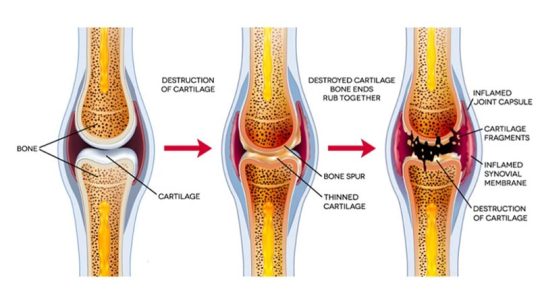
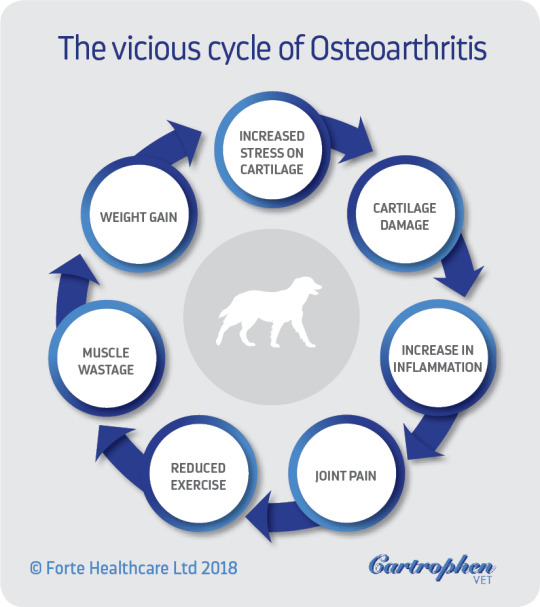
A snowball effect can tend to follow as a dog becomes less active or more reluctant to move due to arthritic pain, leading to weight gain and putting even more pressure on the joints. While arthritis can’t be cured and is almost inevitable with any active aging dog, there are many ways pet owners can try to prevent its progression, including over-the-counter joint supplements and healthy weight management through nutrition.
A recent study by NC State University reported that 40% of 123 healthy dogs between the ages of 8 months and 4 years had radiographic evidence of arthritis on at least one joint - and from that, 24% showed associated pain. More interestingly, 57% of those dogs who had exhibited any arthritis-associated pain had owners who claimed they were aware something was wrong with their pet, yet only 13% of them were receiving any form of pain management or joint support.


Perhaps this is due to a common misconception that arthritis is only a problem found in older dogs. Despite many senior pets suffering from arthritis, it is a degenerative - not age-related - disease. Other risk factors that may contribute to joint deterioration, including genetics, heavier body weight, activity level/exercise, neuter status, as well as diet. Arthritis may typically develop secondary to a musculoskeletal disorder - like hip or elbow dysplasia, or luxating patella - but may also be caused by trauma or infection.
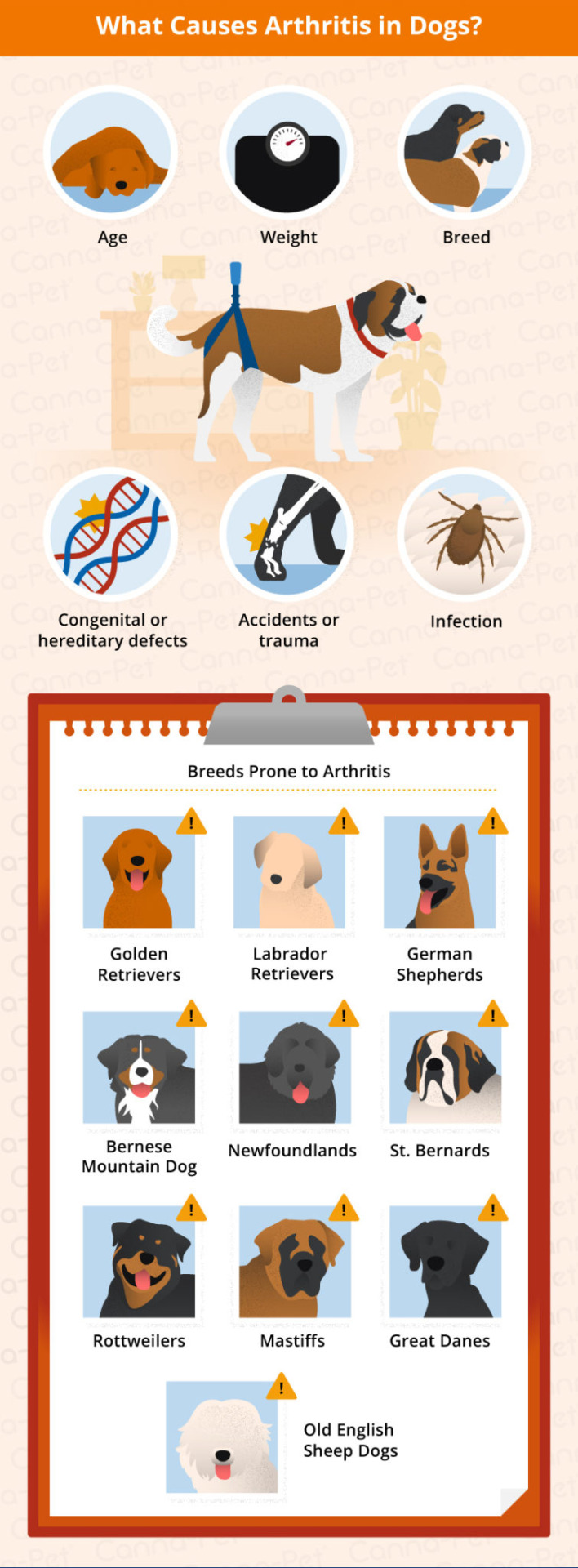
Symptoms of Arthritis:
Lameness or limping
Decreased activity
Inability or reluctance to jump
Stiffness
Difficult climbing stairs
Changes in behavior (less social)
Compulsive licking of the joint(s)
While these symptoms might seem like an obvious indicator of pain or discomfort, recall that not every dog may exhibit these signs. An x-ray, however, may confirm arthritis by displaying the presence swelling of tissue around the joint, increased fluid within the joint, or even changes to the bone such as thickening or spurs.
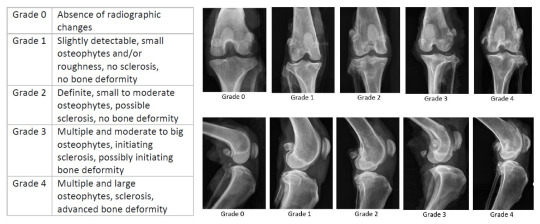
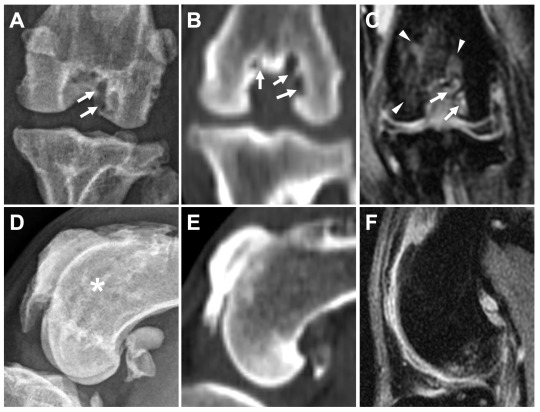
More advanced imaging like CT scan or MRI may help to diagnose an underlying cause of the arthritis by assessing the bone structure and surrounding tissues. A joint tap can also be used to assess the fluid if an infection or autoimmune disease is suspected.
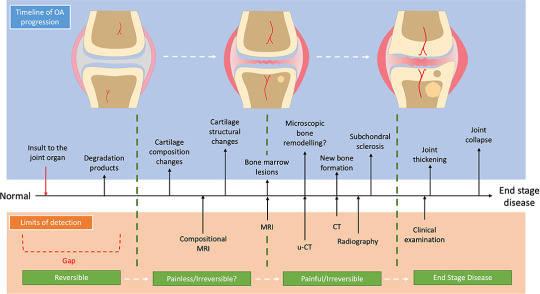

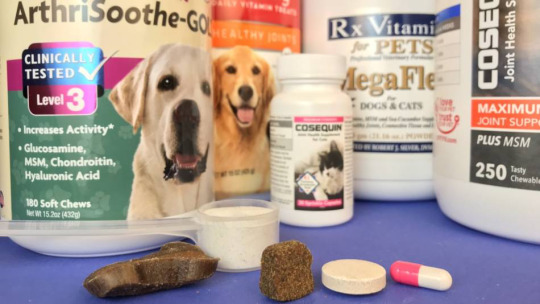
Today, there are many products available on the market that are geared towards supporting our dogs’ joints - many of which will claim to cure or even prevent arthritis altogether. On the contrary, most nutraceuticals will usually take several weeks to months before reaching therapeutic levels. Due to the lack of regulation on pet products, it can be easy for owners to fall for such marketing and have difficulty determining which product is best for their pets.
Here is a useful podcast that reviews tips on choosing quality pet supplements:
Vetfolio - “Advancing Gracefully with Joint Supplementation”
“Dr. Leilani Alvarez joins Vet Folio Voice to explain the importance of using a canine joint supplement at any stage of life, when needed. She offers insight into the role of evidence-based ingredients, how they can work together to support hip and joint health, and why the quality seal from the National Animal Supplement Council (NASC) can signal the best products for your practice.”
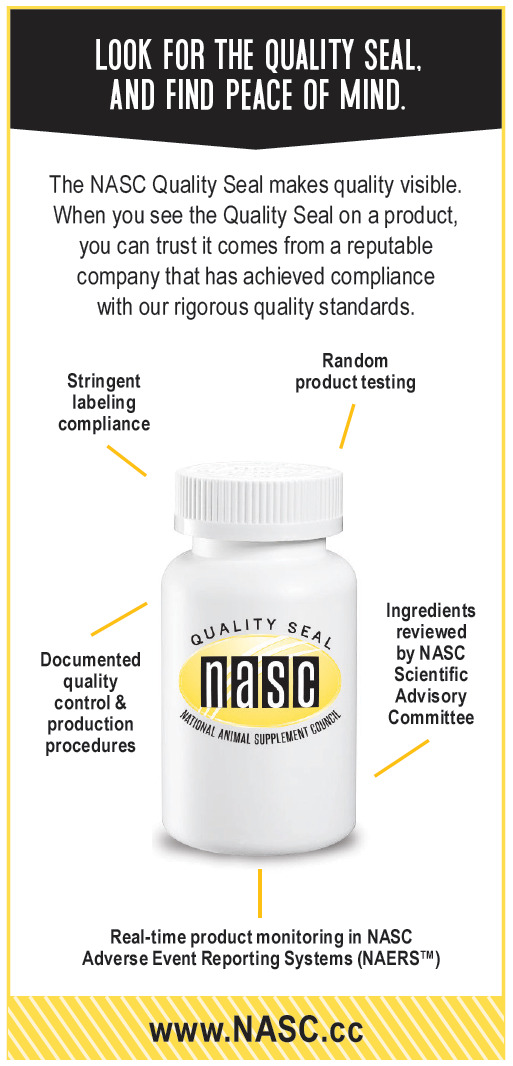
Aside from having an NASC seal on its label, it would be even more credible if the pet product company has been in business for at least 10 years - assuming the company has had great success and testimonials thus far, along with the financial stability and willingness to recall products voluntarily, if and when a fault was found.
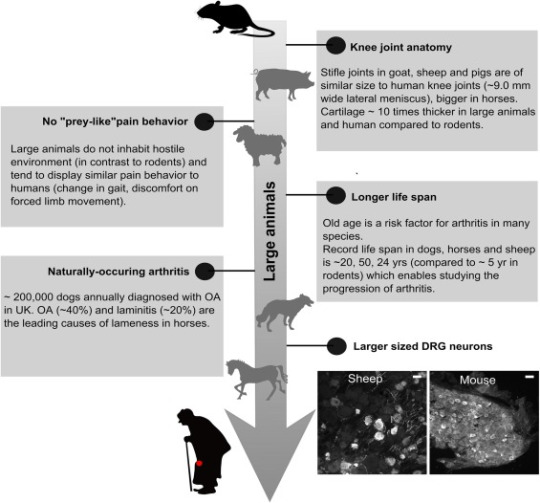
Another important to detail to look out for in determining the efficacy of a joint supplement is to see if the product has actually been tested on live animals with naturally-occurring arthritis (i.e. not induced arthritis, or on samples in a Petri dish). It is also worth considering if experiments were done on the same species as the one it is intended for use - just because a study showed efficacy on arthritis found in humans, may not mean it will have the same efficacy with dogs.
Effective Ingredients/Nutraceuticals:
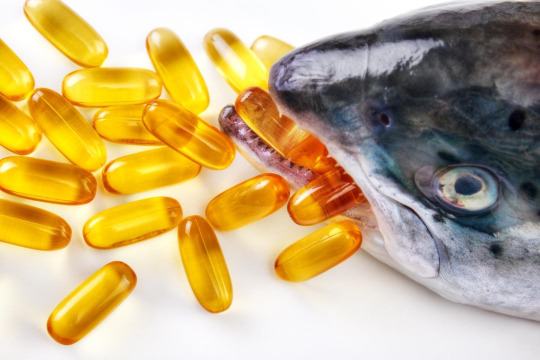
Fish oil - preferably sourced from wild-caught cold water fish - contains high concentrations of EPA/DHA, and is currently the nutraceutical with the most supporting evidence in literature towards managing canine arthritis. Eicosapentaenoic acid (EPA) and docosahexaenoic acid (DHA) are major components of the anti-inflammatory process within the joint capsule. These polyunsaturated fatty acids are essential to dogs - they cannot be synthesized in the body, so must be provided in the diet. A 2010 study suggested that OFA supplementation may allow for reduction in NSAID use for treatment of osteoarthritis in dogs.

Green lipped mussel is a shellfish from New Zealand that obtains its nutrients from phytoplankton minerals in sea water. It is another natural source for OFA - specifically eicosatetraenoic acid (ETA), which can’t be found in other common oily fish. Unlike EPA and DHA, ETA not only has anti-inflammatory properties, but has also been shown to block certain pathways for short-term pain.

Egg shell membrane, normally a protective layer over a growing embryo, contains high levels of glucosamine, chondroitin, collagen, and hyaluronic acid. These are utilized to support connective tissue repair, helping to improve function muscular function and diminish soft tissue pain that may be a source of overcompensating for a joint injury.

Boswellia serata, also known as “Indian frankincense” is a plant native to India, Africa, and the Arabian peninsula. In 2004, a group of dogs with confirmed joint disease in Switzerland received Boswellia extracts at a dose of 40mg/kg once daily for 6 weeks. After two weeks, 71% showed significant reduction in severity of lameness and stiff gaits - dogs had less difficulty while moving, as well as when getting up after a long rest.

Astaxanthin is a red pigment that can be found in salmon and red marine algae. It is an antioxidant which protects cells from damage and inflammation, helping to boost overall immunity and energy. There have been previous studies which showed that astaxanthin contributes to restoration of bone homeostasis, showing potential for counteracting joint injuries.
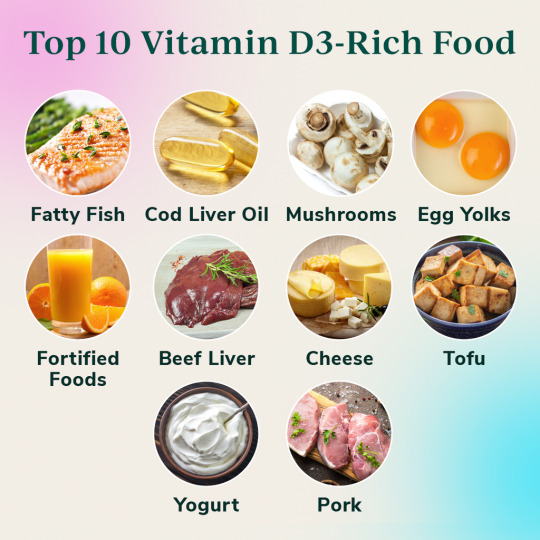
Vitamin D3 is important for supporting healthy bone structure, including the subchondral bone. Dogs cannot absorb Vitamin D3 from the sun the way humans do, so is typically absorbed from dietary sources.
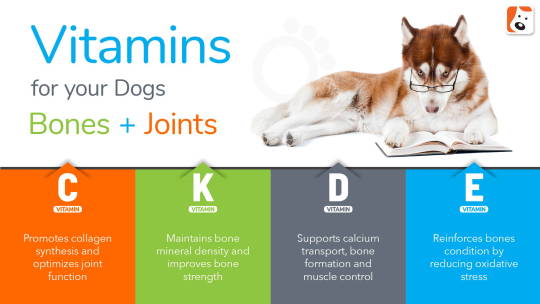
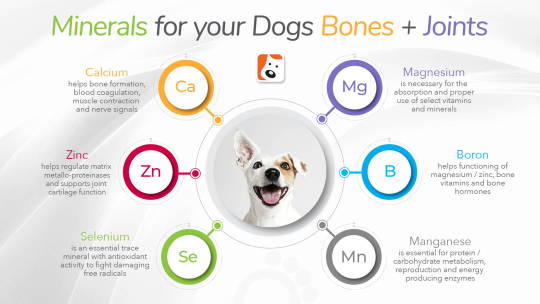

Cannabidiol (CBD) oil, although extracted from the hemp plant, should not be confused with hemp oil. Further, it cannot legally cannot contain more than 0.3% THC, or otherwise make your dog high. Depending where you live, you may not even be able to find or purchase such products for your pet. Although it is still a very controversial ingredient in some areas, it may still work as an anti-inflammatory by interacting with pain receptors through the endocannabinoid system. A study done in 2018 showed that CBD oil administered at 2mg/kg twice daily can help reduce pain and increase activity in dogs with arthritis. However, owners should make sure to avoid purchasing CBD pet products that do not have the NASC seal - those that have not been stamped may contain heavy metals like lead or not be appropriately labeled to display its proper dose.
Dr. Sarah Wooten, veterinarian and certified canine rehabilitation and pain practitioner, reviews a few more commonly suggested ingredients for joint health in this article -
“Joint Supplements for Dogs: The Helpful vs. The Hype” https://www.dvm360.com/view/joint-supplements-dogs-helpful-vs-hype
***For further reading on up-to-date studies on canine nutraceuticals for arthritis, visit: https://www.vin.com/apputil/project/defaultadv1.aspx?pid=22915&catid=&id=8896849&meta=&authorid=
Favorite/Recommended Products:
Virbac “Movoflex Advanced” —- contains all the ingredients listed above and what I currently offer my own dog (Blanca just turned 8 and still has the energy and mobility of a puppy)
Dechra “Phycox HA Max” —- made with hydrolyzed protein, good for dogs with IBD or sensitive stomachs; contains phycocyanin, an antioxidant found in blue spiraling, which they have patented (no other product has this ingredient)
Nordic Naturals “Omega-3 Pet” — probably the most popular fish oil for dogs; affordable, comes in either oil or gel capsules, FOS (Friend of the Sea)-certified product
VRS “Omega Benefits” —- high-quality fish oil used in two of the largest, double-blind, placebo-controlled clinical studies for both joint and skin health; also has a hydrolyzed protein formula as well as a formula for puppies
Standard Process “Canine Musculoskeletal Support” —- popular product recommended by my holistic vet; main ingredients are boswellia and green lipped mussel, but also contains some organic beet (astaxanthin), bovine offal including trachea (collagen), and shiitake and reishi mushroom for immunity
InClover "Connectin" --- best quality joint supplement found at one of our local favorite pet stores (Pet Food Express); main ingredients are glucosamine, choindritin, and Hyaluronic Acid, along with some other interesting herbs, available in chewables/tablets and powder form; clinically proven to work (https://inclover.com/wp-content/uploads/2019/03/Connectin-White-Paper.pdf)
Nutramax “Cosequin”—- affordable, widely available (I’ve even seen these at Walmart); also clinically proven to work (https://www.nutramaxlabs.com/downloads/Cosequin-Studies.pdf)
VetriScience “Glycoflex” —- clinically proven (http://glycoflex.com/wp-content/uploads/2015/12/VSD57-ClinicalResearchSt.pdf), multiple versions available for different stages of joint disease and comes in bacon, duck, or peanut butter flavors
Vetoquinol “Flexadin Advanced w/ UC-II” —- clinically proven to be 50% more effective than glucosamine-chondroitin and actually works similar to an Onsior, which is an injectable NSAID (https://www.ncbi.nlm.nih.gov/pmc/articles/PMC8956235/)
Myos “Muscle & Joint Formula” —- contains their patented Fortetropin, derived from fertilized chicken egg yolks that is packed with nutrients; some dogs might also find this smelly powder enticing and be good for those with poor appetite; clinically proven to work, and also prevent muscle wasting after a TPLO/knee surgery (https://myospet.com/pages/clinical-studies)
“Antinol” - contains PCSO-524, a patented lipid extract isolated from green lipped mussel; clinically proven not only to be effective in dogs, but humans as well (https://antinolstudies.com/antinol-pcso-524-executive-summary/)
ThorneVet “CurcuVET” —- more research needs to be done on curcumin’s effect on arthritis in dogs, yet this product has still been shown to work nonetheless (https://www.ncbi.nlm.nih.gov/pmc/articles/PMC8162585/)
ElleVet Hemp CBD + CBDA Chews - studies conducted by Cornell University - the first ever successful clinical trial on canines with arthritis, the first pharmacokinetic study, as well as the first safety study (https://www.ellevetsciences.com/cbd-science/); chews have a 98% acceptance rate for palatability; and also big kudos to their non-profit organization they developed to provide free veterinary care to homeless pets
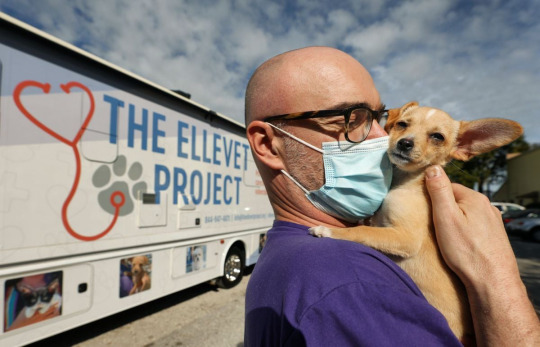
Some dogs, unfortunately, may not be able to tolerate some of these supplements that add higher levels of fat to their diet (i.e. those prone to pancreatitis, or that have trouble with weight gain). Instead, they might benefit from a prescription diet that contains higher levels of OFA, yet still lower levels of fat within the complete formula.
Prescription Diets:
JustFoodForDogs Joint and Skin Support
Royal Canin Advanced Mobility
Hill’s j/d Joint Care
Hill’s j/d Mobility
Hill’s Metabolic + Mobility
Purina JM Joint Mobility
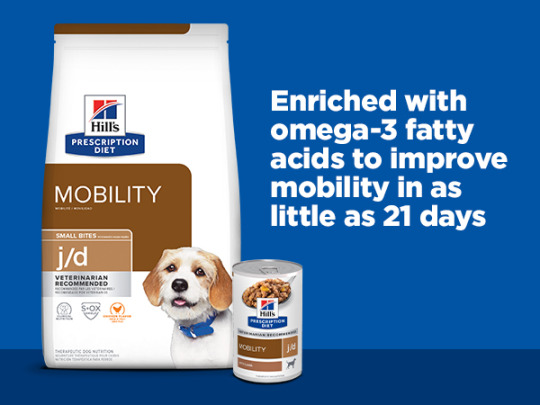
Ask your veterinarian if any of these pet foods or supplements are appropriate for your dog. In the meantime, here’s a video of how to give proper massages to your dog to help alleviate their joint pain :)
youtube
#canine#canine health#joint care#arthritis#osteoarthritis#nutraceuticals#omega3#pet supplements#pet products#dog tips#veterinary medicine#nutrition#integrative medicine#physical rehabilitation#Youtube
0 notes
Text
5 Tips to Keep Your Dog Warm in the Winter
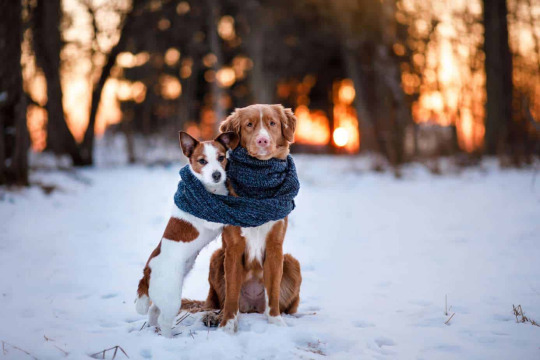
Invest in doggy outerwear - sweaters, hoodies, jackets, vests, even shoes! There's a whole market of pet clothing nowadays. One of our favorite brands of K9 outerwear is Canada Pooch

It's important to note that not every dog's coat may be enough to keep them warm in the winter - especially puppies, small or hairless breeds, elderly dogs, or those with health issues. Just like with people, pets' cold tolerance can vary based on their coat, body fat stores, activity level, and health. Pets with heart disease, kidney disease, or metabolic diseases like diabetes and Cushing's might also have a harder time regulating their body temperatures.

Protect your dog's paws when it's snowing. Boots can help minimize contact with the ground and prevent snow and ice from getting lodged between their toes and causing frostbite. Like chapped lips, cracked paws can be annoying and painful, and built up snow and ice can irritate their sensitive skin between their toes.
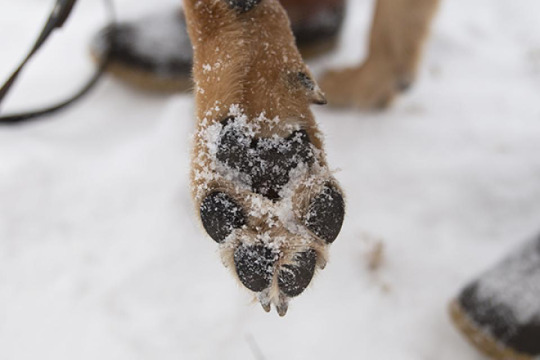
It might feel awkward at first for some dogs, so try to use positive reinforcement as they try to adjust to wearing their boots. Offer high-reward treats so they can learn to associate good things with their boots - when the boots are on, good things are going to happen! :)
youtube
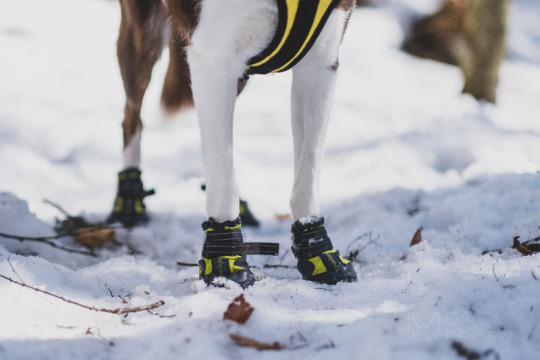
If boots still don't feel right for your dog, you can try applying paw balm or petroleum jelly-based products like Musher's Secret to keep your dog's paws safe and moisturized.

Just always be sure to wipe down and clean your dog's paws thoroughly with with a warm cloth when they come back inside. Sometimes salt and anti-freeze are put on sidewalks and driveways, which can cause chemical burns on your pet's paw pads or gastrointestinal issues if they try to lick it off.
Limit their time outdoors. Winter walks aren't always so magical. Know your dog's limits and shorten their walks if needed. If you can, reserve walks for the warmest parts of the day.
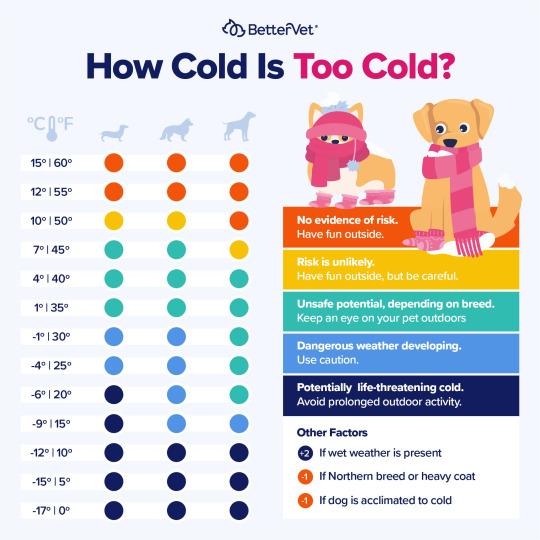
Signs to tell if your dog is too cold: - Shaking, shivering, or trembling - Hunched posture with tail-tucking - Slowing down or reluctant to walk/move - Lifting their paws off the ground - Whining or barking - Ears and nose feel very cold to the touch Even if you decide to leave your dog in the car while you run an errand, it can still be dangerous if they are left for too long without any heat support when its below 30 degrees F outside. While cars can trap blazing temperatures in the summer and open risk for heatstroke, they can also trap freezing temperatures in the winter and open risk for hypothermia. Perhaps try to sit in your car without a jacket and see how long you can bare waiting in there without the heater on.

Provide choices! Give your dog more options for comfortable sleeping places with varying levels of bedding and blankets, in case they need to change their location for more or less warmth.

Set up cozy, wet-proof areas outdoors with heating lamps and wind barriers. Make sure kennels and igloos/houses are well-insulated and have enough space for them to walk in, turn around, and comfortably lay in.
youtube
Unless you have a healthy conditioned sled dog, I would not recommend letting them spend the night outdoors in the snow, without proper shelter and heat support. Watch how cold it can get in a simple dog house:
youtube
Serve warm food and water. At minimum, aim to make sure whatever they consume is at room temperature - but preferably just above their body temperature (101-103 F) when it's especially cold. Warming their food will also bring out their aroma and make it more enticing for them to eat. If feeding kibble/dry or dehydrated, you can mix in some warm bone broth. If it's canned/wet food, avoid microwaving for too long, as this can make the food too hot and potentially deplete its nutrients. Instead, try warming up your dog's wet food with this technique:
As for home-cooked/fresh food, the Balance It Canine Plus supplement not only makes your dog's complete and balanced, but is actually formulated to withstand reheating/microwaving. Our personal favorite! Below is a tutorial on how to utilize the Balance It system:
youtube
When selecting ingredients for your dog's food in the winter, consider including "warming" foods according to TCVM food energetics. Examples of these would be meats like lamb, goat, or venison, and vegetables and starches like sweet potatoes and oats. Traditional Chinese medicine teaches that hot/warm food nourishes the body by bringing heat which improves circulation. To support this theory, some studies have found that food associated with heat consists of compounds that are on average lower in molecular weight, yet higher in protein and fat - which contribute to energy production, and magnesium and potassium - which contribute to blood pressure and nerve function.(https://www.sciencedirect.com/science/article/pii/S2666154320300247) Here is a list of some hot/warm commercial pet food and treats: - SideBySide Pet "Warming" - Dr. Judy Morgan's Fire Element Diet - Pet Tao "Blaze" Freeze Dried Raw Formula - JustFoodForDogs Venison & Squash Recipe - JustFoodForDogs Lamb & Rice Recipe
For more information on food energetics, watch this video:
youtube
5 notes
·
View notes
Text
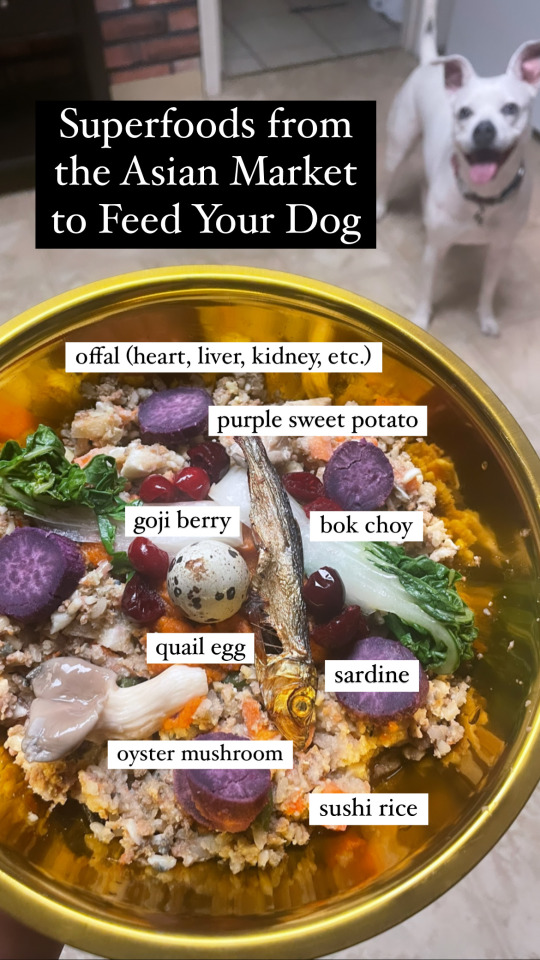
These past few years, I have become a huge advocate for feeding fresh food to dogs to enhance their lives. However, you don't exactly have to transition your dog to a 100% fresh food diet in order to gain the benefits of fresh food.
Simply adding fresh food to your dog's kibble can go a long way in improving their nutrition and overall health. For instance, one study done a group of dogs in 2005 revealed that feeding vegetables just three times a week had significantly lowered their risk of developing cancer, compared to dogs who were only fed kibble.
Asian markets, in particular, have some very beneficial fresh food items that aren't typically found at your local grocery store. These food items, however, are not intended to fully replace your dog's food. Remember - too much of something good can be bad for you.
Instead, they should be offered in moderation as treats, or just small amounts topped over an already complete and balance meal. As a general rule of thumb, treats/toppers should never make more than 10% of your dog's overall diet.

Bok choy (Chinese cabbage) is full of essential vitamins and minerals needed to support a dog’s eyesight, cardiac function, digestion, bone strength, and immunity. Sulfurophane - a compound found in bok choy and other cruciferous vegetables - has been linked to inhibiting cancer cell growth, lowering blood pressure, and activating the nuclear factor Nrf2 which prevents the development of diabetes and its complications. Bok choy’s low calorie, high fiber content also make it a good option for a snack/food topper for dogs who need to control their weight.
Preparation: Lightly steam or boil for better nutrient absorption. Cooking will also help neutralize the enzyme (myrosinase) that can decrease thyroid function. You should also chop/trim their long leaves to avoid choking hazards.

Goji berries (wolfberries) are rich in amino acids, carotenoids which support healthy vision, and polyphenols that have anti-inflammatory, anti-tumor, and cardio-protective properties. Studies on goji berry supplementation in animals have shown that it has the potential to help lower cholesterol, protect the liver by increasing hepatic antioxidant activity, as well as enhance metabolic homeostasis and prevent diabetes-induced renal inflammation.
Preparation: Remove stems if still attached and cut/mash berries. If dried, soak in water until softened to avoid passing straight through the GI tract and losing the benefits of its nutrients.
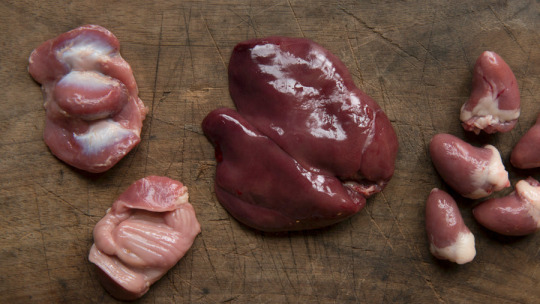
Offal refers to the internal organs and variety meats of animals that can be consumed as food (i.e. lung, heart, kidney, liver, gizzard, head, feet, etc.) The word 'offal' literally translates to "fall off", and thus, whatever falls off the skeleton during the butchering process. Offal is densely loaded with essential vitamins, minerals, proteins, and fats - so small amounts go a long way. Pet owners who use these as ingredients as part of a complete and balanced recipe should keep in mind that each organ is unique in its nutrient profile - dependent on the animal it is sourced from and how it is raised. For example, grass-fed beef may contain less fat yet more vitamin A and E than grain-fed beef, and beef liver has significantly more vitamin A and copper than chicken liver.
Preparation: Boil in water or low-sodium broth. May also be baked or dehydrated into jerky treats.
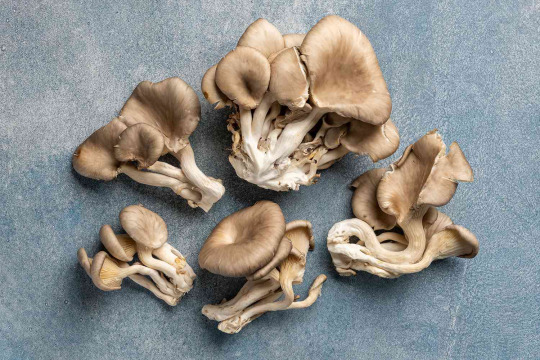
Oyster mushrooms are a good source of protein and fiber, and vitamins that support healthy digestion. They can help to increase satiety and maintain healthy body weight. Oyster mushrooms are also full of pantothenic acid which help to maintain cognitive function and healthy skin/coat. Beta-glucans derived from oyster mushrooms have also been shown to reduce inflammation and strengthen immunity.
Preparation: Lightly sauté or boil in water or low-sodium broth. Raw or dried mushrooms can be difficult for dogs to digest.

Purple sweet potato (Ube or Okinawan sweet potato) are typically found in grocery stores more commonly during the fall/winter seasons. They contain more antioxidants than regular sweet potatoes due to the anthocyanins that cause their violet hue. While all potato varieties may impact blood sugar levels because of their high carbohydrate content, purple potatoes may exert less of an effect because of their high polyphenol content that decreases the absorption of starches in the intestines. In addition, they have been linked to improving blood pressure, likely due to their high potassium content.
Preparation: Peel skin and bake until soft for better digestibility and to prevent intestinal blockages. May be boiled and drained to reduce oxalate intake for dogs with a history of bladder stones, or prone to urinary issues.
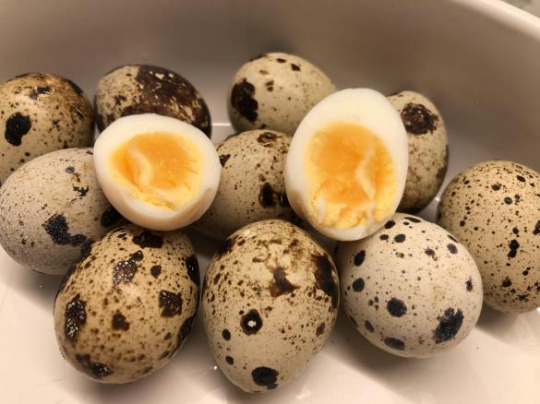
Quail eggs are small, yet packed with protein and essential fatty acids, and have a higher ratio of iron, riboflavin, and vitamin b12 than chicken eggs. It is even safe and can be beneficial to feed them with the shells included for added calcium. Quail eggs have been linked to improving bone growth/healing, reducing liver damage, and increasing energy levels. While some studies have shown evidence of quail eggs treating allergies in humans and mice, they may be less likely to trigger reactions than chicken eggs in dogs who have poultry sensitivities.
Preparation: Wash thoroughly, and handle gently as they are more fragile due to their tiny size. Cooking methods are similar to that of chicken eggs, yet require less time.

Sardines contain all the amino acids your dog needs for optimal health, making it a "complete protein". They are also notorious for being rich in omegas and coenzyme q-10, which help support heart and brain health. What sets sardines apart from other fish, too, is that they are smaller and more short-lived species than larger predator fish and may have less of a risk for mercury poisoning. Because they are so small and have soft bones, you can feed them whole to your pets.
Preparation: Bake or dehydrate. If already purchased as dried, be sure to make sure there is no added salt or seasonings. If canned, preferably those stored in water only.

Sushi rice (Japanese sticky rice) has a high proportion of starch and moisture, giving it a stickier texture when cooked. Sushi rice has virtually zero fat, yet still provides a desirable balance of nutrients while remaining gentle on a dog’s digestive tract. Its higher iron content than regular rice supports healthy blood circulation and can provide more energy to dogs who are recovering from illness. Cooling/refrigerating the rice before serving also enables more retrogradation of prebiotic fiber, helping to lower glycemic responses and maximize intestinal function.
Preparation: Rinse thoroughly and soak in water (with 1tbsp apple cider vinegar - optional) before cooking. If you don’t have a rice cooker or instant pot, boil on the stove until the water is completely absorbed. May be cooked with bone broth for added flavor. You can also use small amounts of beet root powder, turmeric, or blue spirulina to add color and nutrients.
#asian markets#pet food#dog treats#bok choy#goji berries#offal#oyster mushrooms#quail eggs#sardines#sushi rice#purple sweet potato
10 notes
·
View notes
Text
Canine Dehydration
All mammals rely on water to maintain proper bodily functions, and dogs are no exception. In fact, water makes up nearly 70% of a dog's body.


Dehydration occurs when the body loses more fluid than it is consuming.
Water goes beyond just maintaining normal body temperature under hot weather. It also aids in digestion and the absorption of nutrients, transporting oxygen within the bloodstream, the elimination of toxic waste, as well as lubricating the joints and providing cushion for the internal organs.

As a general rule of thumb, dogs should drink approximately 1 fluid ounce of water per day for every pound of body weight for adequate hydration. For example, a 10-lbs. dog should drink around 10 fluid ounces of water daily, while a 50-lbs. dog should drink roughly 50 fluid ounces of water per day. However, these amounts may vary based on life stage, activity level, environment, or diet. Puppies and dogs who are more active, or live in areas with warmer climates should tend to drink more water. Or, dogs that are fed wet/canned food might drink less water than those that are fed kibble.
Healthy dogs will naturally drink enough water to keep themselves hydrated, as long as it is provided to them. That is why it is important to always have fresh, clean water available.

However, sometimes a dog may become too weak or injured, or lose their vision, to be able to reach their water bowls and rehydrate themselves. Besides lack of access to water, other causes for dehydration might be fluid loss from vomiting/diarrhea, heatstroke, and fever.
Puppies, nursing mothers, small/toy breeds, senior dogs, or those recovering from illness/injury are at an increased risk for dehydration.

Dehydration can also be a symptom of an underlying illness, such as kidney disease, diabetes, Cushing's, or some types of cancer. When the body is deprived of water for too long, or it is losing more than it is gaining, its blood volume will thin and cause an imbalance of electrolytes, leading to damage of the organs and internal systems, including the respiratory system.

Signs of Dehydration:
Panting or increased respiratory effort
Increased heart rate
Decreased skin tugor (skin tenting)
Dark red or pale, dry/sticky gums (with prolonged capillary refill time >2 seconds)
Hyper-salivation or thick saliva
Dry, cracked nose
Sunken, dull eyes
Lethargy or dull mentation
Dark yellow urine
Excessive thirst/urination
Vomiting/diarrhea
Lack of appetite
youtube

In cases of severe vomiting or diarrhea, and/or prolonged lethargy and inappetence, medical attention may be required in which dogs may receive either subcutaneous or intravenous fluid therapy. Additionally, since dehydration can be a sign of a larger problem, it is not uncommon for a veterinarian to recommend diagnostics such as bloodwork and x-rays or ultrasound - he/she will want to be able to rule out any other underlying conditions and treat them accordingly.

Tips to Get Your Dog to Drink More H2O:
Have multiple bowls of fresh water available in your home, especially if more than one pet in your household. Be sure to place them in areas you know they will easily reach or walk past regularly. And don't forget to wash the bowls daily and change out the water at least two-three times a day.


If your dog has a history of arthritis or mobility issues, use raised bowls so that it is easier for them to reach. Some bowls are also designed to be slanted to allow for better posture.


Consider using a fountain/recirculating water bowl with built-in filters. The moving water is not only more appealing for some pets, but also prevent bacteria build-up. The water ultimately stays fresher for longer.


If you have a picky dog that is reluctant to drink water on their own, try adding fluids to their food (especially if dry/kibble). Aside from water, you can also pour bone broth or coconut water for added electrolytes. Or, you can try offering fruit/veggie-infused ice cubes, bone broth treats, or over-the-counter flavored liquid supplements.


Invest in portable dog bowls or "pup flasks" so you always have water available for your friend while traveling or on-the-go.


Sources/Further Reading:
Goucher, Taylor K., et al. “Evaluation of Skin Turgor and Capillary Refill Time as Predictors of Dehydration in Exercising Dogs.” American Journal of Veterinary Research, vol. 80, no. 2, 1 Feb. 2019, pp. 123–128, https://doi.org/10.2460/ajvr.80.2.123.
“The Nutritional Value of Water.” Pet Food Institute, www.petfoodinstitute.org/blog/nutritional-value-water/.
Reineke, Erica L., et al. “Evaluation of an Oral Electrolyte Solution for Treatment of Mild to Moderate Dehydration in Dogs with Hemorrhagic Diarrhea.” Journal of the American Veterinary Medical Association, vol. 243, no. 6, 15 Sept. 2013, pp. 851–857, https://doi.org/10.2460/javma.243.6.851.
Reisen, Jan. “Dehydration in Dogs: What to Know and Warning Signs.” Expert Advice: Health, 5 July 2023, www.akc.org/expert-advice/health/warning-signs-dehydration-dogs/.
Wooten, Sarah. “How Much Water Dogs & Cats Should Drink Each Day.” Hill’s Pet Nutrition, 17 Feb. 2020, www.hillspet.com/pet-care/nutrition-feeding/how-much-water-should-dogs-and-cats-drink.
Wooten, Sarah. “Understanding & Treating Dehydration in Dogs.” Hill’s Pet Nutrition, 19 Nov. 2021, www.hillspet.com/dog-care/healthcare/dehydration-in-dogs.
#canine#dehydration#pet parent#hydration tips#dog tips#beatheheat#hydration reminder#hydration is important#hydrate or diedrate
0 notes
Text
Heatstroke in Dogs: "How hot is too hot?"

Heatstroke is a life-threatening emergency when your dog's body temperature becomes too high and cannot be cooled effectively. Early detection and aggressive therapeutic intervention is required to increase the chances of survival, as well as avoiding secondary complications.
Initial symptoms may include:
Panting, Increased thirst --- indicating heat stress; a dog is still generally alert and ambulatory
Hypersalivation or foaming at the mouth, Weakness and/or collapse --- indicating progression to heat exhaustion; a dog may become non-ambulatory and although still mentally aware, may be too tired to react or get up
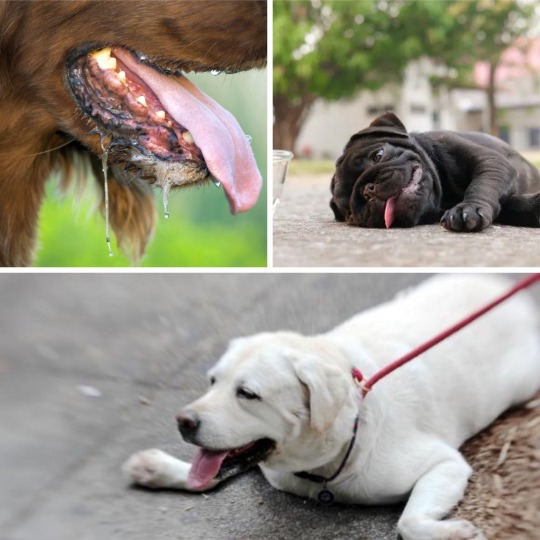
Heatstroke then occurs when a dog cannot regulate their body temperature, and it rises to 105 degrees F or higher.

Dogs who are elderly, obese, have thick and/or dark-colored coats, shortened muzzles (i.e. brachycephalic breeds), or pre-existing heart or respiratory conditions are at heightened risk for heatstroke.
If a dog's temperature remains elevated for too long, severe damage will begin to occur to the organs ---
Gastrointestinal: GI dysfunction will occur from inadequate blood supply and poor perfusion throughout the tract, which may then result in vomiting and/or diarrhea +/- blood.
Cardiac: Blood vessels will dilate and cardiac output increases, leading to the redistribution of blood flow and widespread hypoxia. This may then cause ventricular arrhythmias and ultimately, heart failure.
Neurologic: The brain will start to swell and bleed in certain areas, resulting in seizures, nystagmus (rapid eye movement), anisocoria (uneven pupil sizes), or even coma.
Renal/Hepatic: Kidney and liver failure result from decreased perfusion, hypoxia, and tissue damage. Even if a dog recovers from heatstroke, the kidneys and liver may have permanent damage that will require lifelong treatment.



Other complications from heatstroke may include:
Disseminated intravascular coagulation (DIC)
Systemic inflammatory response syndrome (SIRS)
Multiple organ dysfunction syndrome (MODS)
Rhabdomyolysis

With all of this in mind, heatstroke can be very serious and warrant an ER visit +/- hospitalization. Treatment will involve strategically cooling your pet and intensive care to avoid the secondary complications described above, and death. This might include IV fluids, GI protectants, antibiotics, oxygen therapy if your pet is in respiratory distress, and various other medications to treat cardiac and metabolic dysfunctions. In more severe cases, a dog may even require a blood/plasma transfusion. Length of hospitalization will depend on the pet's response to treatment and can range anywhere from 24 hours to weeks, if complications arise.
In the event heatstroke in a dog is suspected, owners should make every attempt to begin cooling as they transport to a veterinary facility - wetting their fur with cool (not ice cold) water, driving with the windows down (or air conditioning at its maximum capacity) can make all the difference. Studies have shown that pets who are actively cooled down before being taken to a hospital are ~2.5x more likely to survive heatstroke compared to those who are not.
youtube
Unfortunately, many dogs continue to die every year from heat-related causes - or are euthanized when there is a lack of funds for their treatment, or simply very poor prognosis. Measurements need to be taken to spread awareness about heatstroke and advocating for its prevention in our pets.


For more tips on how to keep your pet cool during heatwaves, read my other post - "5 Tips on How to Keep Your Dog Cool".
Sources/Further Reading:
Cohen, Aly. “Heatstroke: A Medical Emergency.” Cornell University College of Veterinary Medicine - Riney Canine Health Center, Canine Health Information.
Flournoy, W. Shannon, et al. “Heatstroke in Dogs: Clinical Signs, Treatment, Prognosis, and Prevention.” Compendium: Continuing Education for Veterinarians, vol. 25, no. 6, June 2023.
Hall, Emily, et al. “Dogs Don’t Die Just in Hot Cars—Exertional Heat-Related Illness (Heatstroke) Is a Greater Threat to UK Dogs.” Animals, vol. 10, no. 8, 31 July 2020, https://doi.org/10.3390/ani10081324.
Magazanik, A., et al. “Tap Water, an Efficient Method for Cooling Heatstroke Victims - a Model in Dogs.” Aviation, Space, and Environmental Medicine, vol. 51, no. 9, 1 Sept. 1980.
Newfield, Amy. “Providing Care for Dogs with Heatstroke.” Today’s Veterinary Nurse, 16 May 2019.
Tabor, Brandy. “Heatstroke in Dogs.” Today’s Veterinary Practice, 2014.
#heatstroke#veterinary medicine#canine#veterinary#heat exhaustion#heat safety#pet products#veterinary emergency
1 note
·
View note
Text
5 Tips to Keep Your Dog Cool This Summer
Keep them hydrated! Water is essential for life - not only does it help regulate body temperature, but it also transports nutrients including oxygen within the bloodstream, supports digestion of food, and the elimination of waste products. Always have fresh, clean water available. It is useful to have more than one bowl of water within the household, especially if there are multiple pets. Where you place the bowl(s) is important too, especially if you have a senior pet, or a pet recovering from injury or illness that might may have trouble walking. Try to keep bowls in areas close to their normal resting areas, or somewhere they will always pass by. Invest in a collapsible bowl or something like a Springer pet bottle or Pupflask for when you're on the go. (When it's extra hot out, you can add in some ice cubes or frozen fruits/vegetables. )

If your dog is the type that doesn't drink too much on their own, you can try adding nutrient-enriched flavors to encourage more water intake. Watch how these owners add juice from canned tuna or infuse their water with fruits/veggies:
You can also try adding water or other fluids like bone broth to their kibble. Here are some other cool ideas on how to rehydrate your dog's dry food:
Use cooling vests/harnesses, or allow them to get wet while exercising. When a dog's coat gets wet, the moisture from their fur evaporates, which will draw out heat from their body. There are special-tailored gear available on the market that are designed for dogs to provide long-lasting cooling. These can be especially helpful for dogs with thicker coats, or dogs with limited cooling capacity and/or stamina (i.e. brachycephalic breeds, overweight dogs). Example: Canada Pooch Cooling Clothes & Accessories

Shallow pools and sprinkler mats can add lots of fun, too!

Provide adequate shade and protection from the sun. When it's over 75 degrees F outside, pavement can reach scorching hot temperatures that bring discomfort and can cause blisters/burns.


Plan ahead for your dog walks! If you know there won't be much grass or shade on your trail, you can use dog booties. Or, you can use a stroller (& yes, there are ones made for larger dogs!) Otherwise, just plan to go when it gets cooler outside :)

This one might sound too obvious, but keep them indoors! If you don't have air conditioning in your home, keep the curtains closed with a fan on, and allow them to lay on cool tile or a cooling mat.

It is totally okay if you need to skip a walk sometimes and let them out only to relieve themselves, especially during a heat wave. There are plenty of ways to keep them entertained at home instead of going out for a walk. Frozen stuffed kongs or lick mats, puzzle toys, and foraging mats can provide lots of mental stimulation. Some dog trainers claim that engaging with a snuffle mat for just 10-20 minutes is equivalent to a 1-hr walk. In fact, not only does adding enrichment to feeding help with preventing boredom and problem behaviors that follow, but it may also help to reduce cognitive decline as well as increase satiety for dogs in need of more weight management.

As you provide these canine enrichment feeding tools, consider using "cooling" foods. According to TCVM (Traditional Chinese Veterinary Medicine), changes in the weather can be a source of seasonal stress, which lead to imbalance and disease in the body. Summer typically brings Heat (Yang) that is combined with either Dampness (humidity) or Dryness (aridity). It might not be just a coincidence that your dog tends to get hotspots or yeast infections in the summer.

To combat summer heat, TCVM practitioners recommend feeding a diet that is cooling and neutralizing. In other words, foods on the Warm (Yang) scale should be avoided or lessened, while increasing the amount of foods from the Cool (Yin) scale like turkey, whitefish, cucumbers, celery, mushrooms, watermelon, etc. Cooling foods like these typically have higher moisture content, fiber, alkalinity, and can be associated with anti-inflammatory and detoxification processes.
As TCVM practices become more mainstream, you may notice more pet products incorporating food energetic methods. Here are a few examples: - "Buckaroo's Cool Down K9" mushroom powder supplement - "Side by Side" cooling products - "Pet Tao Chill" formula ***Consult with your veterinarian/nutritionist before adding supplements to your pet's diet or completely switching foods. If offering as a treat/topper, keep in mind that it should not make up more than 10% of your dog's diet.***
To learn more about dog food energetics, watch this webinar by holistic veterinarian by Dr. Judy Morgan ---
youtube
Sources/Further Reading:
Basko, Ihor. “Food Therapy to Reduce the Stress of Summer Climate Changes.” American Journal of Traditional Chinese Veterinary Medicine, vol. 4, no. 1, Feb. 2009, https://doi.org/10.59565/001c.83752.
Benito, Mila, et al. “Clinical Evaluation of Exercise-Induced Physiological Changes in Military Working Dogs (Mwds) Resulting from the Use or Non-Use of Cooling Vests during Training in Moderately Hot Environments.” Animals, vol. 12, no. 18, 8 Sept. 2022. Physical Training of Working, Service, and Sporting Dogs, https://doi.org/10.3390/ani12182347.
Gewirtz, Elaine Waldorf. “Protect Dog Paws on Hot Pavement.” American Kennel Club: Expert Advice (Health), 5 June 2023, www.akc.org/expert-advice/health/dog-paws-hot-pavement/.
Heys, Madeline, et al. “‘Bowls Are Boring’: Investigating Enrichment Feeding for Pet Dogs and the Perceived Benefits and Challenges.” Veterinary Record, 22 June 2023, https://doi.org/10.1002/vetr.3169.
Niedermeyer, Greta M., et al. “A Randomized Cross-over Field Study of Pre-Hydration Strategies in Dogs Tracking in Hot Environments.” Frontiers in Veterinary Science, vol. 7, 3 June 2020, https://doi.org/10.3389/fvets.2020.00292.
Ormsby, Simone Maree. “Hot and Cold Theory: Evidence in Nutrition.” Advances in Experimental Medicine and Biology, vol. 1343, 11 Jan. 2022, pp. 87–107. Hot and Cold Theory: The Path Towards Personalized Medicine, https://doi.org/10.1007/978-3-030-80983-6_6.
Purina Institute. “Hydration in Pets: Strategies to Manage Water Balance in Cats and Dogs.” CentreSquare, Focused Nutrition, Apr. 2021.
Robbins, Patrick J., et al. “Environmental and Physiological Factors Associated with Stamina in Dogs Exercising in High Ambient Temperatures.” Frontiers in Veterinary Science, vol. 4, 11 Sept. 2017, https://doi.org/10.3389/fvets.2017.00144.
1 note
·
View note
Text
PET CLUB HAUL - Product Reviews & Nutritional Considerations
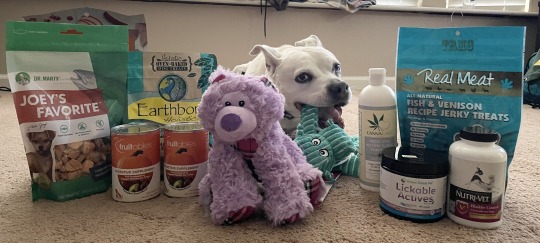
Pet Club has been one of our go-to local pet stores in the Bay Area for a few years now. We like going here because we tend to find lots of food/treats at reduced pricing, and lots of toys (Blanca's fave) for less than $15. They also have self-service pet wash stations at their Emeryville and Santa Rosa locations!
You can find coupons and more info on their website: https://www.petclubstores.com
Here are some good finds from the other day, some of which we already purchase pretty regularly and others that just seemed worth a try ---
Fruitables Superblend Digestive Supplement - a canned pumpkin-based puree with added vitamins and minerals Normal retail price is usually ~$7 per can, but we bought it from Pet Club for $5.49 per can Ingredients: Pumpkin, Apple Pomace, Spinach, Tomato Pomace, Choline Chloride, Ginger, Calcium Carbonate, Cinnamon, Calcium Pantothenate (Vitamin B5) Pyridoxine Hydrochloride (Vitamin B6), Folic Acid (Vitamin B9), Vitamin B12 Supplement. Why we like it: Helps to promote healthy stools and digestion.
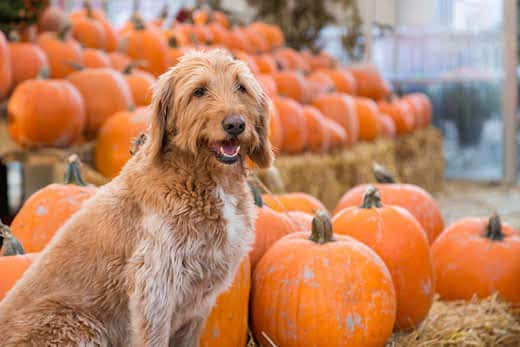

Pumpkin is considered a "superfood" for pets because it is full of antioxidants - it is a source of vitamins A, C, and E, as well as iron, potassium, and beta-carotenes. The soluble fibre content in pumpkin aids in firming stools by absorbing water as it passes through the GI tract, and also acts as a prebiotic to support the presence of healthy gut bacteria.

The Fruitables Superblend "Weight Loss" formula also contains ground oatmeal and inulin to help dogs and cats feel more full and enhance bowel movement - it's good for pets that would benefit from a low-calorie/high-fiber diet, i.e. patients who are obese or need to lose weight, or have diabetes, chronic/severe constipation, hyperlipidemia, liver/galbladder disease, IBD or lymphoma, etc. This product's efficacy has actually been clinically proven through feeding trials done at Texas A&M University (here's the article - "Lipid Metabolic Alterations and Satiety with a Pumpkin-Based supplement in Obese Dogs") There is also a "Switch" version, which is just 100% pumpkin puree (no additives) - useful when transitioning diets or introducing new foods.

Fish & Venison Jerky by The Real Meat Company - made with sustainably wild-caught hoki and mackerel and free-range venison from New Zealand Normal retail price is usually $20-25 per 12 oz. bag, but we bought it at Pet Club for $16.99. Ingredients: Fish, Venison, Lamb, Dried Chicory Root, Vegetable Glycerin, Salt, Mixed Tocopherols (used as a preservative).

Why we like it: The meat is gently air-dried to preserve its nutritional value, and supplemented with dried chicory root (a natural prebiotic) to prime the gut. There are no artificial preservatives, coloring, or fillers --- "mixed tocopherols" are actually a combination of different sources of vitamin E, and can come from nuts, seeds, healthy oils, and leafy green vegetables like spinach. Also, the vegetable glycerin used in their products are indeed vegetable-based, with Kosher certification, refined to meet USP grade - meaning that the glycerin is naturally extracted with low vapour pressure, low toxicity, and low flammability to reach high purity levels. In addition, Blanca's current diet mainly consists of venison and fish as protein sources...
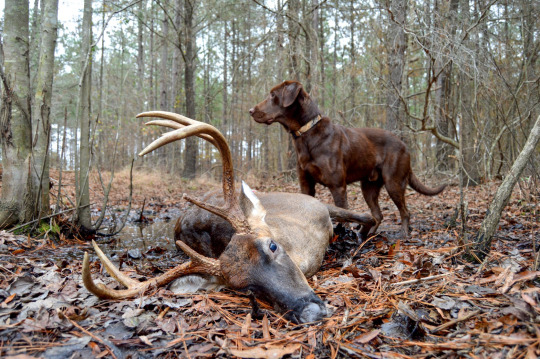

Venison/deer meat is low in fat, but rich in protein, and loaded with iron, phosphorus, zinc, and B vitamins that help support healthy metabolism and red blood cell production, and boost energy. It is also considered a novel protein, which makes it less likely to cause allergic reactions in pets with food sensitivities or inflammatory bowel disease.


Fish like hoki and mackerel are packed with essential omega-3 fatty acids that contribute to pets' overall health by improving the body's inflammatory response, easing pain and swelling of the skin, organs, and joints. Moreover, the wild-caught fish are sourced from certified sustainable fish populations in New Zealand that strive for the highest standards in reducing mercury contamination.
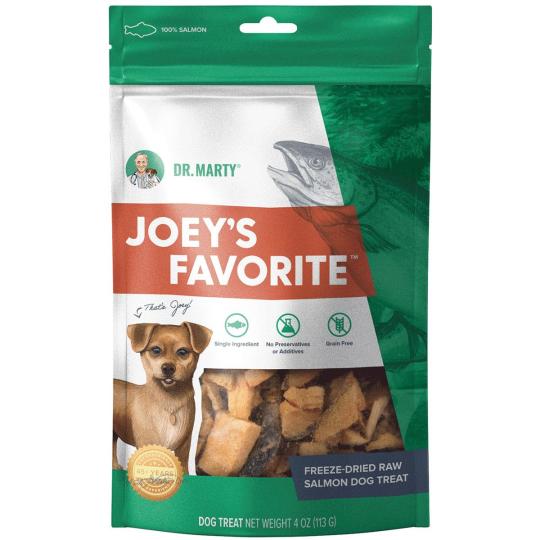
"Joey's Favorite" Salmon Treats by Dr. Marty - 100% real freeze-dried salmon bits Normal retail price is usually $20-26 per 4 oz. bag, but we bought it from Pet Club for $16.99 Ingredients: Salmon. Why we like it: Only one single ingredient, and since it is freeze dried, it still contains a good portion of its nutritional content. They're good to serve as treats or pour as meal toppers.


Salmon is a great source of omega-3 fatty acids that help support skin and coat health, cognitive function, and improve mobility in dogs with joint or inflammatory diseases.
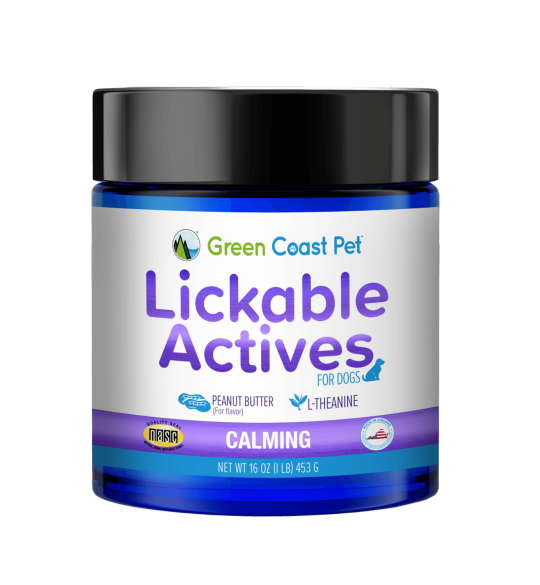
Lickable Actives Calming Peanut Butter by Green Coast Pet - peanut butter supplemented with L-theanine, an amino acid found naturally in green tea leaves that eases stress-related behaviors
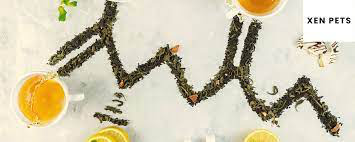
Normal retail price is usually $20 per jar, but we bought it at Pet Club for $15.99 Ingredients: Ground peanuts, L-Theanine.
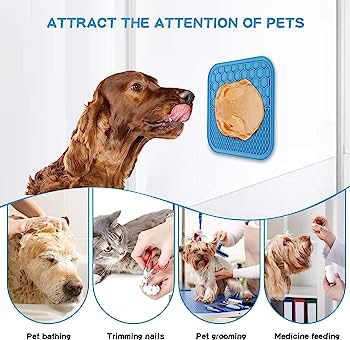
Why we decided to buy it: Good for spreading on lick mats or stuffing in rubber toys for enrichment, or even distractions while bathing/grooming or during vet visits. Might also be a good ingredient for making treats at home. This product also doesn't contain any added sugars or xylitol like many commercial peanut butters do. The NASC seal on its label indicates that the product maintains its quality and safety through regular third-party testing.


L-theanine can help to decrease anxiety by raising serotonin and dopamine levels in the brain, without causing any negative side effects or overt drowsiness. Research says that L-theanine supplementation in dogs result in reduced behaviors triggered by fear, such as flight avoidance, hyper-vigilance and trembling. There was a study done in 2010 to examine the effects of L-theanine on dogs with noise phobia undergoing behavioral therapy - those that received L-theanine tablets consistently over a ~2-month period tended to exhibit less panting, drooling, lip licking, yawning, vocalizing, attention-seeking from owners, and other compulsive behaviors (here's the article - "Effectiveness of L-theanine and behavioral therapy in the treatment of noise phobias in dogs ").


Although this next product isn't food, it caught my eye because Blanca was due for a bath. She always tends to form some redness/irritation on her chest/upper abdomen area from laying on the ground and wearing her harness.
CannaLove Medicated Antimicrobial Shampoo - a safe and gentle solution to heal hot spots and skin irritations; controls dry, itchy and flaky skin caused by seborrhea or non-specific dermatitis

Normal retail price is usually $20 per bottle, but we bought it at Pet Club for $18.99 Ingredients: Water, Disodium laureth sulfosuccinate, Disodium cocoamphodiacetate, Cocamidopropyl betaine, Cocamidopropyl amine oxide, Sodium lauroyl sarcosinate, Cannabis sativa (Hemp) seed extract, Urea, Honey, Quil/aja saponaria (Soapbark) bark extract, Chamomilla recutita flower extract, Urtica dioica (Nettle) extract, Rosmarinus Officinalis (Rosemary) leaf extract, Gaultheria procumbens (Wintergreen) leaf extract, Humulus lupulus (Hops) extract, Lawsonia inermis (Henna) leaf extract, Equisetum arvense (Horsetail) extract, Salvia officinalis (Sage) extract, Benzalkonium chloride. Why we bought it: Hypoallergenic shampoo designed to eliminate ringworm and topical parasitic infections, yet safe to be used daily. It's hemp-infused and pH balanced to be ideal for all fur types. The product has been third-party tested, and actually has a QR code on each bottle that takes you directly to detailed results of every batch test.
0 notes